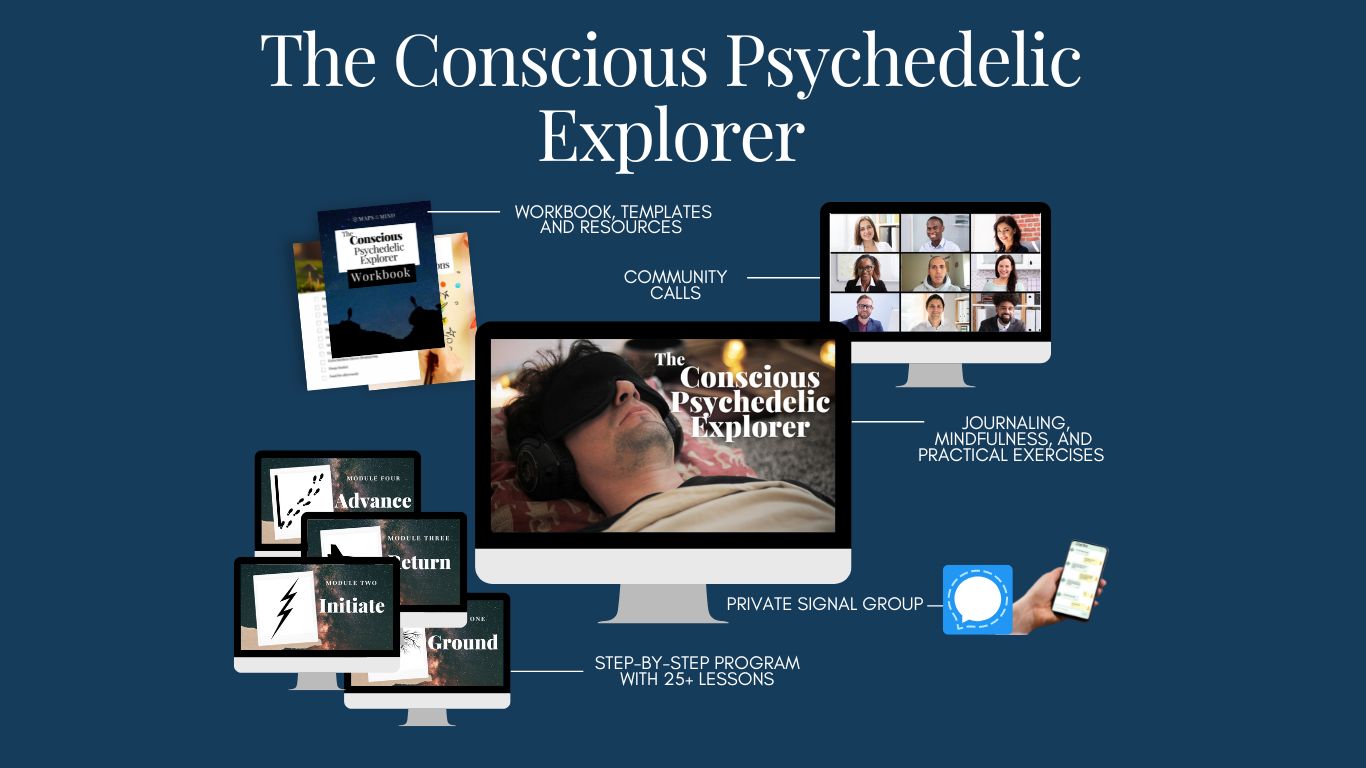The post Crafting Psychedelic Playlists: Music, Silence & the Flow of the Trip appeared first on Maps of the Mind.
]]>It can soften the come-up, deepen the peak, or gently guide the return. In some sessions, music is performed live. In others, it’s pre-recorded playlists that shape the inner landscape.
If you’re using playlists, you’ve got two options:
1. Use a pre-made playlist.
2. Build your own.
Pre-made is easy and convenient. Crafting your own lets you have more control over the shape the mood, the message, and the medicine. In this post, I’ll break down the essential knowledge for building psychedelic playlists: how to map music to the different phases of a trip, why silence is just as powerful as sound, how to use the “pendulum effect,” and a playlist hack that saves you hours.
This is the first in a series on music and psychedelics—designed to help you create powerful soundscapes for meaningful experiences.
Let’s dive in.

The Arc and Phases
Before beginning to build a playlist for a session the first thing to know is the arc of a psychedelic experience. That is, the different phases of an experience, such as: ‘the come up’, ‘the peak’, and ‘the downslide’.
Understanding the different sections of an experience can help you to make the best musical choices for each section, supporting the trajectory and unfolding of the experience.
There have been various ways of categorizing the different sections so here I’ll share a couple.
6 phases for LSD – Bonny and Pahnke
In The Use of Music in Psychedelic (LSD) Psychotherapy, Helen Bonny and Walter Pahnke outlined 6 phases for an LSD trip.
These were:
- Phase 1: Pre-onset (0 to ½ hour)
- Phase 2: Onset to (½ to 1½ hours)
- Phase 3: Building Toward Peak Intensity (1½, to 3½ hours)
- Phase 4: Peak Intensity of Drug Action (3 to 4½ hours)
- Phase 5: Re-entry (4½ to 7 hours)
- Phase 6: Return to Normal Consciousness (7 to 12 hours)
In my experience, the peak comes on a bit sooner than this, more like in the one – two hour range, but this gives you an idea.
For psilocybin, I’d put the timings are shorter:
- Phase 1: Pre-onset (0 to 15 mins)
- Phase 2: Onset to (15 to 45 mins)
- Phase 3: Building Toward Peak Intensity (45 mins to 1 hours)
- Phase 4: Peak Intensity of Drug Action (1 to 3 hours)
- Phase 5: Re-entry (3 to 5 hours)
- Phase 6: Return to Normal Consciousness (5 to 6 hours)
As a general rule of thumb, calming music is to be played mainly during the onset, ascent, and return phases and more emotive music was deemed as better reserved for late in the building towards the peak phase and during the peak phase:
“Music with strong evocative emotional sentiments was only played during peak, on the assumption that an important pre-requisite is for the individual to first feel calm and safe and that more evocative music would enable an activation of autobiographical and therapeutically significant when played at peak.”
– Bonny and Pahnke – referenced in The Hidden Therapist
The Phases of a Psychedelic Trip: Come Up, Peak, Come Down
When it comes to planning a playlist for a session, the simplest way of breaking it down is into 3 sections following ingestion of a substance.
For example, with psilocybin:
- Phase 1: Come Up (0 to 1 hour)
- Phase 2: Peak (1 to 3 hours)
- Phase 3: Come Down (3 to 5 hours)
Following these basic phases, musical choices would be:
- Come Up: Calming music
- Peak: Emotive music (or “sentimental” or “cinematic” music)
- Come Down: Calming music
As before, this is designed to promote feelings of calm and relaxation at the beginning of the trip, and to establish a sense of safety to launch from. The emotive music intensifies emotions at the peak. Finally, calming music returns once more to smooth the return to normality.
Silence
When building a playlist, we can start by boiling the session down into three phases for overall simplicity. This helps us to get started and build the high-level trajectory. We can then add nuance by employing other techniques to enhance the overall flow of an experience.
The Power of Silence
Silence can be used strategically in a playlist for psychedelic sessions.
Seconds or minutes of silence in the middle of a playlist can offer a needed pause. The absence of music can lower the intensity and offer a moment of peace. It can give a sense of space, and act as a reminder to reconnect with the breath and body.
I see them almost as ‘pit stops’ on the way.
The therapeutic impact of the absence of music is significant; the choice not to play music can serve as a potent intervention. Silence, in this context, is more than just an absence of sound—it can act as a pause in stimulation, influencing the subjective experience. Moreover, silence sets the stage for a desensitizing contrast when music resumes, enhancing the freshness of the new musical experiences.
In some cases, in a private or 1-1 session, silence may even be used for extended periods of the session, up to 30 minutes, or even hours. This may be just what the journeyer needs and wishes for. These intervals of quietness may also create an opportunity for meaningful interaction between the facilitator or tripsitter and the journeyer.
When incorporating silent intervals into your sessions, it’s crucial to inform all journeyers beforehand about the planned periods of silence. This pre-session briefing is essential to prevent potential confusion, as silence may otherwise be interpreted as something being amiss or a technical glitch.
It’s also important to note that, as with music, not everyone responds to silence in the same way. I’ve known a couple of people who found that it didn’t help or have the intended effect. In those cases, it dropped them out of their journey or reduced their overall experience in a way that they didn’t much care for.
Gongs and Bells
An alternate method to silence, that may also be used with silence is the use of bells and gongs in a playlist. These may also be used as a reminder to return to the breath and to recentre in a journey, or to recall an intention or inner resource to mind.
The Pendulum Effect
I first learned the ‘pendulum effect’ from psychedelic musicologist and Wavepaths founder Mendel Kaelen. They were utilized in his playlists for the groundbreaking psychedelic studies on treatment-resistant depression.
The idea of the pendulum effect is that music will move between different levels of intensity within the peak phase of a psychedelic experience.
So for example, the peak of a psilocybin experience lasts approximately two hours. Using the pendulum effect, music will not be at high intensity, or highly emotive, for the full two-hour period of this phase. Rather, music will go between some high-intensity and lower-intensity music in this period.
The high-intensity tracks may help to bring about deeper emotions, and autobiographical content, which can provide the necessary material and experience for catharsis.
The lower-intensity tracks, which might be calmer or a little more mellow, can offer respite from the intense emotional work that is being carried by the more emotional music. They can act similarly to silence and offer somewhat of a break.
I once heard someone use the analogy of burning coals to describe this process. They stated that after a significant release or an energetic series of songs, the downshift in intensity can be particularly useful. The intense tracks are like blowing on a fire to make it hot and get the flames roaring, and then silence or calmer tracks serve as a time for the embers to burn slowly.
The Template Approach
If you’ve ever tried making a psychedelic playlist from scratch, you will know that it takes a lot of time.
There is, however, a way to have the customized aspect of a self-created playlist with the convenience of a pre-made playlist. This is to use a pre-made playlist as a template.
Most pre-made playlists will follow the phases of a psychedelic trip so the basic structure is already in place.
You can then swap out tracks with your personal choices as you see fit. So if you would really like to include just a few specific pieces of music in your playlist, you needn’t build a whole playlist from scratch. You can start with a pre-made playlist and then simply swap your choices into the sections of the playlist where you think they will best fit. You can put them in the place of tracks that have a similar intensity so that the overall flow of the playlist will remain intact.
Conversely, if you find a playlist that looks good overall but has one or two tracks that you would rather not listen to during your session, you can swap them out for your own choices.
If you want to find tracks of a similar vibe you can do this by using the ‘suggested tracks’ feature on a playlist on music platforms such as Spotify. The algorithm will look at a playlist and offer suggestions for similar tracks based on the music it contains.
Final Thoughts on Playlist Creation
Crafting the ideal playlist for a psychedelic journey is an art that hinges on understanding the nuances of the experience. Whether live or recorded, music plays a pivotal role in shaping these journeys. When creating playlists, it’s important to bear in mind the three key phases of a journey: Come Up, Peak, and Come Down, and to accompany each with specific musical choices. Calming tunes bookend the journey, while emotive music enhances the peak.
Silence, strategically integrated, emerges as a powerful tool, offering breaks, reducing intensity, and creating space for reconnection. Alternative approaches, like bells and the Pendulum Effect, provide additional layers to the experience. If you’re seeking efficiency, the template approach allows personalization within a pre-made structure.
When creating your playlists, it’s important to remember that it can be a process of refinement over time. I would recommend that you don’t over-obsess over having the ‘perfect’ playlist the first time. Allow yourself to try musical choices, learn from experience what works well and what doesn’t, and use those to inform and adjust musical choices going forward.
It’s also important to consider the journeyer’s musical preferences in terms of genre and instrumentation. This is something I’ll explore in the next blog post, so be sure to check back soon.
Stay safe, journey well.
The post Crafting Psychedelic Playlists: Music, Silence & the Flow of the Trip appeared first on Maps of the Mind.
]]>The post 4 Journaling Methods to Boost Beneficial Psychedelic Processes appeared first on Maps of the Mind.
]]>We need to utilise other methods in our preparation and our integration for these experiences.
Different methods can help set us up for insightful experiences, and then maximise benefits and keep us on a path of learning and growth. There are many, and some popular ones include: mindfulness, yoga, breathwork, and nature immersion.
Another one of the big boys is journaling.
This is because journaling can help with self-reflection, emotional processing, and integrating insights.
As such, journaling is one of the best things one can do to support their psychedelic-assisted growth.
So, how does it work? What are the benefits? And how can you get started today?
In this blog post, I will be talking about the benefits of journaling and how they work synergistically with psychedelic processes. Then I will be offering you a few different journaling methods to support your psychedelic-assisted growth. I will also add a few tips on each so that you can start journaling today.
My intention with this blog post is to highlight the benefits of journaling in the hopes that you might be inspired to try it yourself and to give you some concrete examples of things that you can do so you can get started today.
Let’s dive in.

Benefits of Journaling and Psychedelic Processes
Writing pen to paper forces us to slow down. Simply by taking the time to write out our thoughts and feelings, journaling offers us the chance to be aware of what makes up our inner world. We can see things from inside ourselves, quite literally, on the paper in front of us, giving us an increased awareness of them. And with that, we also have an opportunity to reflect on them.
By allowing us to see what is on our minds and gain a deeper understanding of ourselves, journaling might even be considered psychedelic — if we are going by the literal meaning of the word: mind-revealing.
As such, it is an excellent tool to synergise with our actual psychedelic experiences.
Journaling can be a way to integrate a more reflective and aware way of being in our days—what we might call a psychedelic way of life. It also helps clear the mind—like mental decluttering—and has been shown to have emotional effects such as reducing anxiety. Both of these effects are also going to be beneficial when we are in the preparation stage of our psychedelic experiences.
After our experiences, journaling can help us in our integration as well. Beyond documenting them, writing about our experiences gives us a chance to further unpack them, dig out insights, and solidify them. With insights unpacked, we also have an opportunity to make plans and move forward in the integration process.
To summarise, some of the benefits of journaling related to psychedelic use include:
- Promotes self-awareness
- Enhances awareness of thoughts and feelings
- Provides opportunities for reflection
- Aids in clearing the mind and reducing anxiety
- Helps in planning sessions and logistical details
- Assists in documenting experiences and unpacking insights
- Facilitates integration of insights
- Facilitates further reflection and planning for integration
Journaling Methods to Support Psychedelic Processes
Ready to start journaling?
Here are a few different styles of journaling that you can try today.
1. Free Writing (Basic Journaling)
This is the most basic. In the simplest terms; put pen to paper and start writing.
To gain a better understanding of yourself and your emotions, try not to focus only on things that you have done or things that you see, but write about your thoughts and your feelings.
Write about what is on your mind and use that as a starting point to write further reflections and observations.
Write about your feelings. You can write about your feelings in the moment or in different situations or significant moments in your day or life. You can write about any instances where certain feelings were triggered.
And it is as simple as that. It does not matter if what you write is petty. It does not matter if it seems boring or nothing special. Just the process of writing will help get things out and that process will help you to reflect and introspect.
One way of incorporating this method is the morning pages. The morning pages, as originally described in The Artist’s Way—Julia Cameron’s classic book on creativity— are three full A4 pages of longhand journaling each morning. Again, about anything. Just get pen to paper and write until you fill the pages.
I have found this three full pages method to be an extremely useful practice. If I have something niggling away at me or I feel like I have too many things on my mind, I find that taking time to sit down and write my thoughts out is extremely clarifying, improves my emotional state, and gives me some actionable items to move forward.
Tips for starting a free writing journaling practice:
- Get a nice pen and journal or pad that feels nice to write with. This will help make the process more enjoyable.
- Keep the journal private so that you know that it is a safe space for you to be able to fully express yourself without fear of judgement or any kind of repercussion from anyone else.
- Remember to write your thoughts and feelings, not just objective facts.
- It can be helpful to ask yourself questions. Think about questions that a coach or therapist would ask you. Or use them to direct them back to your values.
2. Writing Letters
Often, the difficulties or problems we have in our lives come from our relationships. As social creatures who have evolved with the need to successfully socially engage to survive, it is no surprise that relationships can be the source of difficult emotions.
Sometimes in our psychedelic experiences, insights may come to us about our relationships with others. Or it might be the case that our intention for an experience is a relational issue that we are looking to process emotions around and resolve.
Writing letters to other people can be hugely helpful in supporting these processes.
The beauty of the exercise of writing letters to other people is that you have a safe space to express your emotions without necessarily having to send those letters to the people you are writing them to.
Just the process of writing letters can help us to become more aware of our feelings and offer a lot of therapeutic value. This can be done both in preparation and integration of an experience, depending on where it is most relevant for each person. In both cases, it can again help to process emotions and gain mental clarity.
Tips for Writing Letters to Others
- It is usually most useful to focus on people you have some difficult emotions around.
- Be completely uncensored. If there is anger, if there is pain, if there is frustration, allow yourself to feel it, and express it in the letter. Remember, you do not need to send it to them. Just let it out, and put it down on paper.
- If you decide that it would be good to send the letter or message you have written, you might like to make some revisions. Go back once the heat is off and think about your wording and how you would like to communicate. You might consider something like non-violent communication.
- Consider using the following questions as prompts for your letter: What would you really like to say to them? What would you like them to know? If you were going to die next week, what should not be left unsaid?
- If you want to share anything from your letter in person, you can use a bulleted version of your letter for reference.
3. Writing Letters to Self
Writing letters to yourself can also be a very useful exercise.
By somewhat externalising ourselves and seeing ourselves as another person, we can get a different perspective on our problems and a new level of awareness around them.
Often it is hard for us to have perspective on our own problems because we are too close to them. It can be the case that if somebody else were to come to us with our problems —the exact same ones—we could easily dole out the perfect advice and tell them what to do.
As the quote goes:
“Wisdom is the ability to take your own advice.”
Letters to self can also be a means of exploring your inner dialogue by writing letters to different aspects of yourself—for example, the inner child, the inner critic and your higher self. This way of seeing ourselves as made up of many separate selves or parts, and communicating with them, is fundamentally the same as popular and effective psychological techniques used in parts work and Internal Family Systems.
Letters can also be written to our past and future selves. This can give you a chance to reflect on your journey and to look forward.
Tips for Writing Letters To Yourself
- When writing a letter to your present self, try imagining it is a good friend. Consider: What do they (you) need to hear right now? What advice, encouragement or support would you offer to someone in your situation at this moment?
- If writing a letter to your future self, express your hopes, dreams and intentions.
- When writing to different parts of yourself, such as your inner critic, consider making the letter a dialogue. Ask the part what it wants and write responses from it.
Trip Reports
Writing trip reports is, I would argue, an essential aspect of integrating psychedelic experiences. I would not say that everyone needs to do it, but I will say that most people would likely benefit from doing it.
Firstly, trip reports are great for documenting your experiences and your journey over time. Beyond that, the process of writing them offers a chance to revisit and remember the experience, refresh the memory, and consolidate it further, along with any insights and lessons.
Writing reports also offers a chance for further emotional processing. It is not uncommon that I will be brought back to tears when I am re-listening to the playlist and writing up my report.
Tips for Writing Trip Reports
- Start with basic objective details: setting, dosage, people present, time of the session, etc.
- Write an open-ended report about your subjective experiences. Write about thoughts, feelings and perceptions.
- Allow yourself the freedom to further reflect and riff on anything that comes up.
- If you listened to music during your experience, try listening to the same music again when you are writing your report. It can be extremely effective in taking you back to the experience.
Final Notes and Tips
I hope this gives you some ideas and concrete examples of ways that you use journaling. However, it is not always easy to get started. Common barriers to journaling include perfectionism, self-censorship, or lack of time. To combat these, I will finish with some final tips:
- Allow your journaling to be imperfect. Allow it to be rubbish.
- You do not need to read your entries back. Remember that by putting pen to paper, you are doing it. The process itself will be helpful.
- Allow yourself freedom of expression. When you are writing, do not think about sharing your deepest feelings or forbidden thoughts with anyone else. Keep your journal a free space where you can say absolutely anything
- Start small. Try to find the time in your daily, weekly, or monthly routine when you can do it.
Final Thoughts
Journaling can increase self-awareness, improve emotional states, and facilitate introspection and reflection. For these reasons, it can be a great synergistic practice to pair with intentional and growth-oriented psychedelic exploration.
I have found journaling to be one of the most transformational and supportive practices to use alongside psychedelics, helping to bring about more valuable and beneficial experiences and also aiding in their integration.
I hope this post has inspired you to try journaling and given you some useful prompts to get started today.
Stay safe. Keep journaling.
The post 4 Journaling Methods to Boost Beneficial Psychedelic Processes appeared first on Maps of the Mind.
]]>The post The Power of Remembering: Enhancing Psychedelic Integration appeared first on Maps of the Mind.
]]>When it comes to integration—the part of the psychedelic process after our experience where we try to consolidate any perceived benefits—remembering our psychedelic experiences can be a crucial part of the puzzle. Remembering helps us to reconnect to the experience and make it a part of our being. It helps to reconnect us with insights, impressions and important truths we may have encountered.
In this blog post, I will explore remembering as a part of integration. I will look at the benefits of remembering, its role in processing, and how it can help reconnect us to our experience more deeply. I will also look at a few different methods for remembering and recalling the experience so that by the end of the article you will already be able to begin this practice.
My intention with this post is to highlight the importance of remembrance and recall in the psychedelic integration process, and to give you ideas and tools on how to do this so that you may maximise the benefits from your experiences.
Let’s dive in.
Reconnecting with the Experience
When we remember an experience, psychedelic or otherwise, we reconnect with the thoughts, feelings and perceptions that arose during that experience. This is true whether remembering is through spontaneous or active recall.
In the context of psychedelic integration, this is relevant when we consider psychedelic integration as being able to carry over some of the wisdom and insight from our psychedelic experiences into our day-to-day lives outside of the experience.
Deep personal truths can become crystal clear to us in the psychedelic state. And those realisations about what is true and deep and important to us are not things we want to forget easily. Most likely, we want to hold onto them and carry them with us as we re-enter our normal lives. The act of remembering is a way to bring parts of them back into our psyche and our being.
Processing Experiences
Reconnecting with aspects of the experience through remembering can also help with processing. This can be especially important and helpful when we have had very dense psychedelic experiences that have contained huge amounts of content and information. Experiences may have had a high amount of emotional arousal or even crept over into being overwhelming. Those experiences, if left unprocessed, can result in other problems if they continue to exist unresolved in our psyches. Unresolved issues can lead to a manifestation of problems in other areas; mentally, behaviourally and physically.
By being with our memories in a state of remembering or recalling, we can touch the experience again and allow further opportunities for processing.
When experiences are fully processed, there is less ambiguity and more clarity around them. This is where we want to be when moving into action with our integration: beyond processing and ready to move into the deliberate and active part of the integration process.
Keeping The Experience Alive
There is a saying that says the moment someone dies is not when their heart stops beating or their body physically ceases to exist, but that it is the last time anyone ever thought of them. As long as people keep thinking of a person, some part of them is kept alive.
This is relevant in the context of psychedelic integration because, for deeply meaningful experiences, we want to keep them alive. Even though an experience may have finished, it can be seen to continue to live on in spirit, if it continues to influence us through our memory of it.
Although our psychedelic experience may have ended and the pharmacological effects have worn off, we can keep it alive by recalling it, revisiting it, and remembering it. This helps to keep the experience as part of our being—rather than some thrilling experience we once had and then forgot about and that had no meaningful influence on the rest of our lives.
If there is some truth that has been revealed to us, some knowledge that has been transferred—some revelation or realization—we want to remember that and we want it to inform how we live. When we are living in full alignment with that, then in terms of psychedelic integration, we can consider that a success.
Integration Begins Immediately
This remembering process can begin even before a session is finished. It can begin after the peak, on the end of the downslide, when you are into calmer waters. Here you may already begin recalling and reflecting about what has happened at the peak of the experience. In what is often a calm, quiet, and meditative state, this is a good time to stay with your experience and begin integration by processing and reflecting on the content of the experience.
In this regard, the integration process can be seen as starting as soon as somebody begins coming down from their peak. At this time, it is highly important to stay with the experience as best as possible, and not be in a rush to leave psychedelic states or for the session to end. This means not rushing to go back to mundane things, but staying with yourself and the waves of experience that are still coming. Allowing whatever you have experienced to fully sink in. By allowing it to sink in, it can more easily become part of our mind and our being.
Methods of Remembering and Recall
There are many different ways of remembering and recalling to aid psychedelic integration. Here I will share a few.
Recalling Through The Senses Meditation
One means of aiding recall is a type of guided visualization exercise. This works by systematically going through each of the five senses, and recalling what you can.
If you have an experience that you would like to remember, psychedelic or not, you can practice this now as you read. Begin by taking a breath and calming your mind. Then, move through the five senses.
Sight
Remember what you saw; the environment, things in the room, people that you were with, any visions or visuals that you may have experienced. These might have occurred in dreamlike psychedelic states, deep recesses of the mind, or the depths of inner or outer space.
Smell
Remember what you smelt. Were there any scents or smells in the space? Can you recall the smell of the mushrooms or the ayahuasca brew? Call all smells back to mind.
Taste
Are there any tastes you remember? This is not usually a prominent source of memories, but maybe you can recall the taste of the mushrooms or the ayahuasca brew. Recall any tastes that you can.
Touch
Remember what you touched. Was there something that you were lying on? Were there any materials around? Recall as many details as you can and hold them in your mind.
Sound
Remember what you heard. Bring to mind any music that was playing and hear it in your head. Were there any sounds from nature or the environment around you?
When you have gone through the five senses, some of the experience should be back with you and you can move on to a final step.
Feelings
Finally, can you remember how you felt? What were the most prominent emotions?
Sit with any emotions that come up and allow them to go wherever they may go. Allow them to enter into your being, and notice how you feel physically—the somatic sensation in your body.
This is an important step because meaning is usually accompanied by some kind of emotional content. Emotions can be a doorway through which we reconnect to key moments.
Expressing the Experience Creatively
Expressing the experience creatively via art or music can also be a great way to reconnect with it. A simple way can just be doing doodles with pen and paper. You may bust out some colours or crayons, or you might try a poem. Whatever method, just try to somehow capture and express some essence of your experience.
Revisiting Recordings
Another method of triggering recall is by revisiting any recordings that were made during the session. This can include audio recordings, photos and videos. Listening or watching back can work wonders to reconnect with the version of you that was having that experience. Preparing necessary recording equipment in advance can be useful for these means.
More simply, you might revisit any notes that you have made with a pen and paper. Reading back over these notes can be a very simple and effective way to reconnect with the experience.
The Role of Journaling
Journaling can be an especially effective and impactful way to integrate an experience.
As part of many of the groundbreaking psilocybin studies done at Johns Hopkins, participants were required to write up a trip report in the form of an open-ended narrative. They were required to do this the same day of their experience, in the evening, and to bring it for discussion the next day. After learning about this and trying it myself, I was surprised by how beneficial it was and made this an unmissable part of my integration process. I do not write it on the same day but always schedule it for the day after.
The process of journaling about an experience after it has happened is helpful because it can help to unpack dense or content-rich experiences. In the act of journaling, we may find little nooks, crannies and crevices of the experience that we had completely forgotten about. This unpacking of the experience can help to facilitate and deepen any understandings that may have arisen. It is generally good practice to capture the experience whilst it is still fresh, either that evening or the day after.
Recreating The Context
Another thing to consider when it comes to memory recall is context-dependent memory. Context-dependent memory refers to the phenomenon whereby it is easier to recall memories when the context of the original experience is replicated somewhat.
In terms of psychedelic experiences, this could include, for example, parts of the setting. This might be done by listening to the same music or revisiting smells. It could also be the clothes you wear or how the space is decorated.
If you had any type of pre-session ritual, you might also revisit that. If you went for a run and meditated before, then to re-create that you might go for a run and meditate, and then simply smell some mushrooms. In some cases, you might even take a low dose to help connect with the psychedelic state and any associated insights.
If you are proactive in setting up your experience for easier recall, you might prepare a specific incense or blend of essential oils to be smelled during the experience. You will then be able to use them to help trigger memories in the future.
Proactive Integration
Remember to Remember
We know the truth and the insights; we have learned something profound. Remembering to remember can be the tricky bit. Sometimes we just forget to remember our lessons.
Proactive ways to help retain a memory include scheduling periodic sessions to revisit or reflect upon an experience. This could be, for example, one month later, or on a monthly or yearly interval. You might create routines or rituals to support this. This could be a moment of recall at the end of a daily meditation session, or spending a day out in nature once a year, potentially assisted by a mini dose. It can be useful to put these events in calendars or set reminders so that we remember to remember. This type of proactive integration can be hugely valuable in maintaining a connection with a psychedelic experience and its insights over time.
Visual Reminders
Another way of supporting memory is by having associated visual reminders in your environment. For example, if you made a piece of artwork or drew a mandala based on your experience, you might hang it up somewhere in your home where you will see it often. It could also be an item that you find in nature which represents the experience in some way, or a house plant or a piece of art that was prominent or significant during the experience.
You Can Not Remember Everything
After a deeply impactful or meaningful experience, it can be natural to want to remember every last detail. In reality, that is unrealistic. Although it is helpful to make an effort to remember the experience, it is important to accept that some aspects of it may be lost. Realistically, you are not going to be able to remember the entirety of the experience in perfect detail for the rest of your life.
Accept that some details may be lost over time and that that is okay. That said, if you are actively recalling and revisiting meaningful experiences, fewer details will be lost, recall will be better, and this will reinforce the integration of those experiences.
Final Thoughts
“Remember, remember” is not just for the 5th of November. It goes for our psychedelic experiences too.
Remembering can help to facilitate the processing of dense or overwhelming experiences and maintain a connection with the transformative aspects of a psychedelic experience over time. It can help to integrate profound insights and perspectives into daily life and it can allow for a deeper reflection on any lessons gained.
I invite you to try recalling your experience after your next psychedelic session. Try taking some time, even if it is just a couple of hours, to write up a report of your experience the day after. See for yourself what comes of it and if or how it deepens your process. If you already have an experience you would like to recall, try it today!
Do you practice remembering important experiences? Which of the techniques do you find most effective for recall and integration? Is there anything you read here that you would like to try? Leave your comments below. We look forward to hearing from you.
Stay safe, remember well.
The post The Power of Remembering: Enhancing Psychedelic Integration appeared first on Maps of the Mind.
]]>The post Transformative Journeys: How Kristi Unlocked Healing and Growth Through The Conscious Psychedelic Explorer appeared first on Maps of the Mind.
]]>Meet Kristi, a member of The Conscious Psychedelic Explorer.
The Conscious Psychedelic Explorer is my flagship program for using psychedelics for healing, insight, and growth. In it we go step-by-step with preparing for, setting up, navigating, and integrating meaningful psychedelic experiences. I’m reopening The Conscious Psychedelic Explorer for new members next month!
If you’ve been looking on and are curious to join, here’s a transcript of a conversation I had with Kristi, a member who joined in the last opening, earlier this year. Kristi shares her experience of the program, how she went from frustration to transformation, and how she is passing on what she’s learned to people shes facilitating for. Read on to find out how you can unlock the power of psychedelics for your own journey…
–
John: Where were you before the course versus where you are now?
Kristi: I was frustrated, before the course. I had done several ayahuasca retreats and had been doing my own journeys with psilocybin and I wasn’t getting the journey that I wanted.
I saw all these other things happening [with others] and I knew the potential for the psychedelics and the medicine. And so I started Googling and looking for information about how to get there, how to create or make this journey happen. Or how to deepen it. And I came across your course the night before it started. And just signed up. It seemed to be exactly what I was looking for: a complete guide to journeys.
I went through the course. I had my journey planned for right when the course ended. And I went through everything that we went through in the course, step by step. It was basically a road map to get to where I wanted to go. And the journey that I had right after that was 180-degree difference. It was night and day from my previous journeys. I visited past trauma, I had forgiveness, experienced love and beauty. It was amazing!
I dropped right in and used all the tools and everything you taught us in the course and had a really deep and insightful and valuable journey, that I’d been looking for, through all of these experiences, and finally, I had reached it. And it was all because I did everything you taught us and everything we learned.
J: Amazing. It’s so wonderful to hear. And great work. I’ve said it to people before, but, I mean, like you said, you did everything. Not everyone does.
K: I mean, I really wanted that experience. It was very important to me to go deeper and get there. And I did everything from the clearing to meditating to our inner resources, self-care, and just, yeah, all of the things. And it all came together.
J: That’s amazing to hear. I don’t know. It seems weird to say, but like, congratulations…!
K: Thank you. *laughs* Pat on the back.
J: I shared with you about it before, but I know. Also, it’s just really great when you’re like searching, searching, searching. I’ve had that also. I mean, like coming out of experiences. Like, it’s just really kind of disappointing, and then it’s great when it lands. When it comes through.
K: Yeah. I was like, “Finally. Oh, my, oh, my God. Finally. This is what it’s like.” Cause I would see and hear people having all these experiences and I’m like, “This is beautiful.” And I like what I’m seeing, but I’m not getting anywhere. I’m not growing.
I’ve had a couple journeys since then and they’ve been great. The last one I did recently, it took me a little longer to get into it. I just kept thinking, ‘Remember your training. Remember your training,’ and then I just tried to relax and breathe, and then I was like, I got there.
J: Amazing. You’re on a great path.
K: Yeah. It feels much different for sure. Like my journeys before, and now. it feels different. I feel like I’m just learning so much otherwise, searching for more information on psychedelics and really trying to expand my knowledge with everything, integration, and all of that. So the course for sure kind of kickstarted that, to where I now feel like I’m learning about psychedelics in general, about journeys, and then continuing myself.
J: Amazing. Is there a place you’re hoping to get to or at the moment or you’re just, like, devouring information? And curious?
K: Yeah I mean, even before I took the course, I kind of just fell into facilitating. I had a friend who wanted to journey, and so, I was like, “I’ll sit for you.” And he’s like, “Okay”. And then he had a really profound experience and started sending people. So I’m kind of in this, doing it for myself but also to help with my facilitation and help other people. Well, this has actually come into play with my facilitating. I’m using these tools and everything we learned in the course, passing them on to the people I’m sitting for. And it’s really helping. I can see the difference.
J: That’s amazing. I didn’t realize you’d already started facilitating. It’s almost like in tandem with your process. You’re meant to do it apparently.
K: It’s been a really cool process for sure. And just something I fell into, but it was something that I had been wanting to do, and so it’s all just kind of coming together. Very synchronous. That’s been really great. They’re also passing on some of the techniques and things.
J: What was or has been your biggest win from taking the course?
K: I would say obviously knowing that, like all of this, everything I learned, works. I have seen it. I have experienced it. I have seen the change and the results. And that was my biggest motivation and the biggest takeaway as well. But also just being in the course, it’s such a safe space. You can ask whatever you want, you can say whatever you want. Share your experiences and you’re with a group of like-minded people who are all doing the same thing, searching for the same thing. Everybody might be in different areas with their experience, but everybody’s coming together to learn and everybody has their own insights and wisdom and experience to kind of help you along with learning. And that was something I really enjoyed, was just talking to people in the class and seeing where they are, what helped them, what they’re doing. And that was really valuable. Even still, it goes on. I mean, people are in the signal group all the time, asking questions and getting feedback, sharing trip reports.
And I know, especially even when I went on my journey, I had sent a message that I was going into it and I got so much support and love and just affirmation about it. I took it with me on my journey. It was really, really special.
J: It’s beautiful to hear. And I think almost everyone says chatting to the people or having some other people is a favorite part. Yeah. And also you’re contributing in the signal group. Like I asked you if you if I could share your wisdom in my newsletter.
J: What was your favorite part of the program?
K: I really enjoyed the group calls and the additional things you brought in, like the music experience and the mini-class we had on that. And the guests, with Sam (Gandy) like all of those played a part and I really enjoyed them. But yeah, overall, the group calls I think were my favorite. To talk to people and see where they are and realize I’m not alone.
Just knowing that there are other people who are in the same spot as I am and trying to learn and trying to navigate this, and having that validation of I’m not the only one thinking I’m doing it wrong or trying to get something out of this.
J: We will have more opportunities for that. Some more guests and other experiences. More to come.
J: What would you say to someone who was on the fence about signing up for the course?
K: Oh just do it. If you’ve come across it and you’re thinking about it, you’ve looked for it for some reason. I would say it was 100% worth it. You know, there’s no reason not to, if that’s something you’re searching for. It has been so beneficial not only in my own journeys but with assisting other people’s journeys. I was looking at a lot of other courses and nothing else fit. They were all about integration or coaching or something else. And this was the only one that I found that was exactly what I was looking for. It was how to create your journey and basically a road map of how to do it. Step by step, from preparation to integration and everything in between. It was exactly what I needed and wanted, and I got so much out of it. Invest in yourself! You’re worth it!
J Amazing. I’m really happy to hear that.
K: It was funny. You actually came up in my journey, my last one, and it was just like “John is a genius, John is so smart for creating this.” I was just like, Yes, yes, so smart. But yeah, it was pretty interesting, it came up that way.
J: Oh, wow. That’s s incredible to hear. I don’t know what to say. Very kind of you to say.
K: I think just the way you present the information and you’re so passionate and patient and you just, you let people say what they need to say, no matter how long it is. *Laughs.* Just accept it and answer questions in a very delicate and knowledgeable way.
J: Thank you so much for your kind words. It’s been super enjoyable. I mean, I really enjoyed speaking on the calls and getting to know people. People like you. It’s great. So thank you for joining.
K: Yeah. Yeah, I’m glad I did for sure. Spur of the moment decision but…
J: You know I’m really glad you did. It’s funny because when you said that, I was thinking. It was lucky. I’m really glad you did. I think technically you signed up after the deadline.
K: Oh, did I? I did it at like 11 or midnight my time. So probably past it on your end.
J: Right. Okay. Great that the link was still open. Not that much of a genius – I couldn’t get the link to close at the time it was supposed to.
K: That’s a technical difficulty, but it worked out!
–
Thanks to Kristi for her time and for having this conversation.
The Conscious Psychedelic Explorer opens its doors again next month, September 2023.
If you have any questions about the program, go ahead and email me at [email protected]
Key Program Details
The Conscious Psychedelic Explorer is a step-by-step program that teaches you how to prepare for, set up, and integrate meaningful psychedelic experiences to help you harness personal insights, access healing states, and accelerate your personal growth.
Core Program
- 25+ Pre-recorded video lessons
- Access to a private CPE Signal group
- Workbook, templates, and extra resources
If you join in the next opening you will also be part of a cohort that has the chance to be supported with live calls to work through the program in 6 weeks. This will include:
- 6 Weekly live community calls
- Weekly meditation, journaling and practical planning exercises
- Weekly emails to stay on track
Dates for Live Calls
All calls are at 7pm UK time / 2pm EST / 8pm CET on:
Dates coming very soon!
Live calls for all CPE alumni continue on a monthly basis throughout the year. This is a chance to ask me any questions you have and connect with the community.
Bonuses
There are a whole bunch of bonuses, including:
- Quarterly workshops in 2024 to learn and connect in community
- Guest masterclasses and experiences on topics like neuroscience, research, setting, and music.
- Living database of music playlists for psilocybin, LSD, MDMA and ketamine (Periodically updated)
- + more
Price
$497
This is the final time I will be offering this program for $497 before the price goes up, so if you’ve been thinking about it, this is a good time to join.
The post Transformative Journeys: How Kristi Unlocked Healing and Growth Through The Conscious Psychedelic Explorer appeared first on Maps of the Mind.
]]>The post The DMT Hyperspace Travel Guide appeared first on Maps of the Mind.
]]>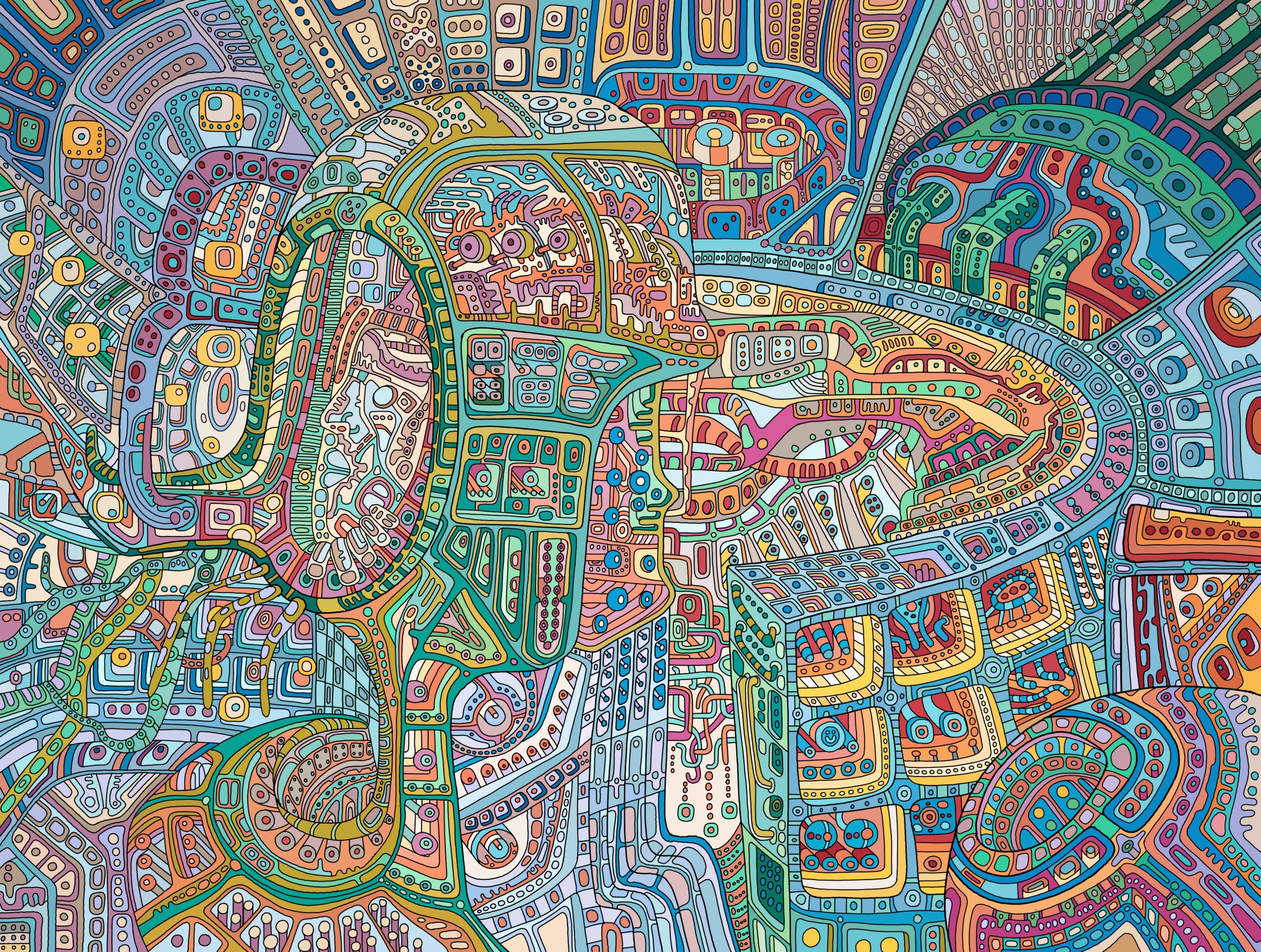
Strangeitude by Harry Pack @harrypackart
by The Archaic Revival
Most people read a travel guide before they go somewhere new.
But what if the place you’re going to features inter-dimensional travel, hyper-intelligent design, and a variety of sentient entities?
Here’s how to prepare for travel to DMT hyperspace:
Create a Comfortable Setting

Make sure you are in a comfortable, private setting.
Bonus points if it is also aesthetically pleasing. You want this space to feel grounded and safe.
If you’re using a room in your house, clean it. Light a candle or incense if you please, do anything that makes the setting feel warm and inviting. The spot you choose should allow you to go from sitting to lying down immediately, make sure you have something soft to lay on and a pillow. Optionally you can use a reclining chair.
Have Someone With You

This step is optional but recommended: have a trusted friend or loved one with you.
You can journey alone, but having someone by your side can help you stay grounded and reassure you of your safety. If you talk aloud during the experience, your sitter can help you navigate your experience or record what you said to tell you afterward.
Get Comfortable Physically
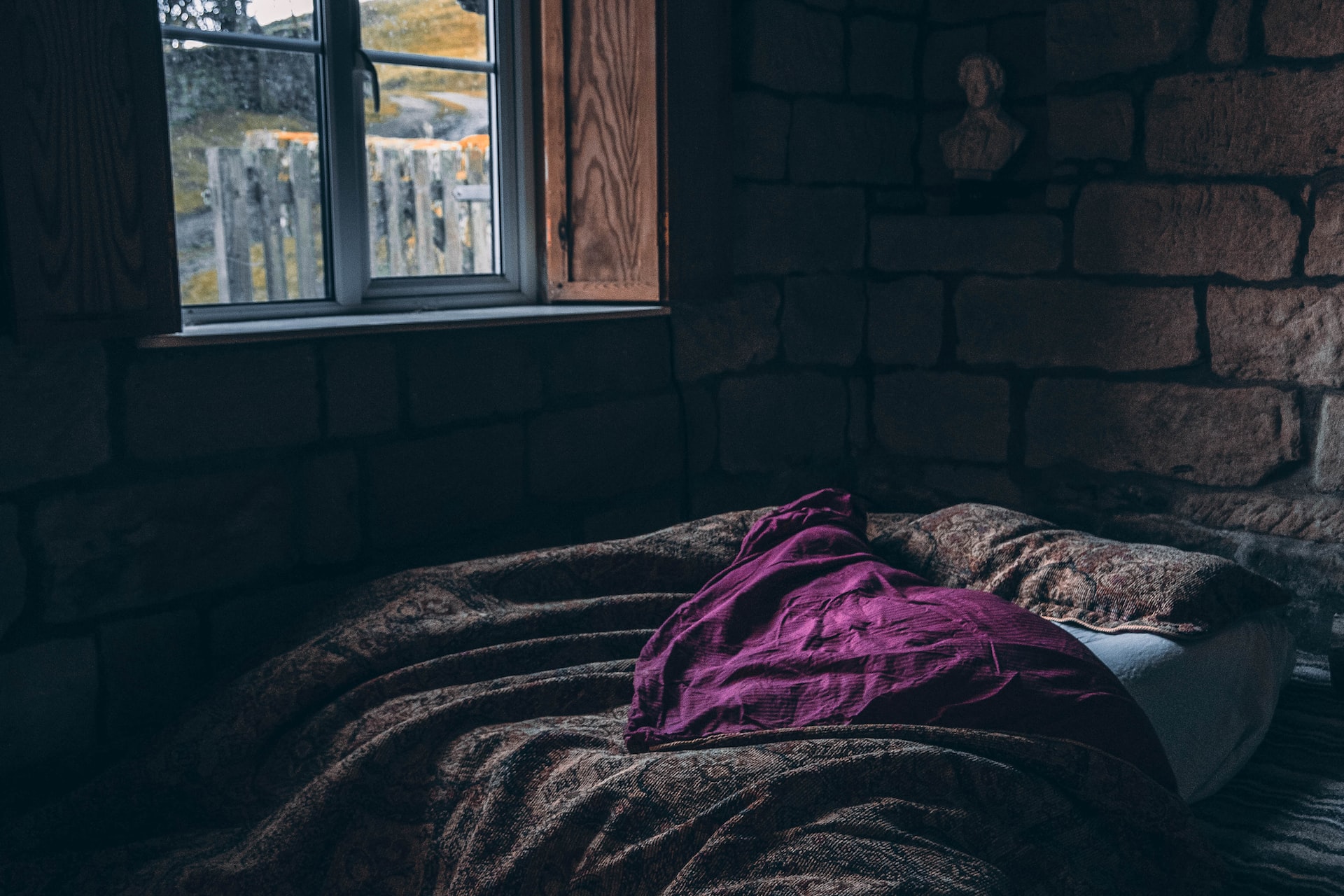
Wear loose-fitting clothes. The last thing you want while traveling through different dimensions is to be bothered by physical distractions.
Another optional, but helpful step is having a blanket over you during the experience. I find it adds comfort and a feeling of safety. A weighted blanket can also be used, the extra pressure puts your nervous system into “rest” mode which may reduce some symptoms of anxiety as you lift off.
Choose a Quality Vaporization Method
The last thing you want while reality is being ripped away from you is to have a coughing fit or to taste burnt DMT in your mouth.
My personal favorite vaporization methods are glass vapes(I use Eclipse) that are water-filtered & homemade vape pens, but everyone has different preferences.
Use whatever method seems best for you, but be aware that the “sub-quality methods” are significantly less efficient and often waste DMT.
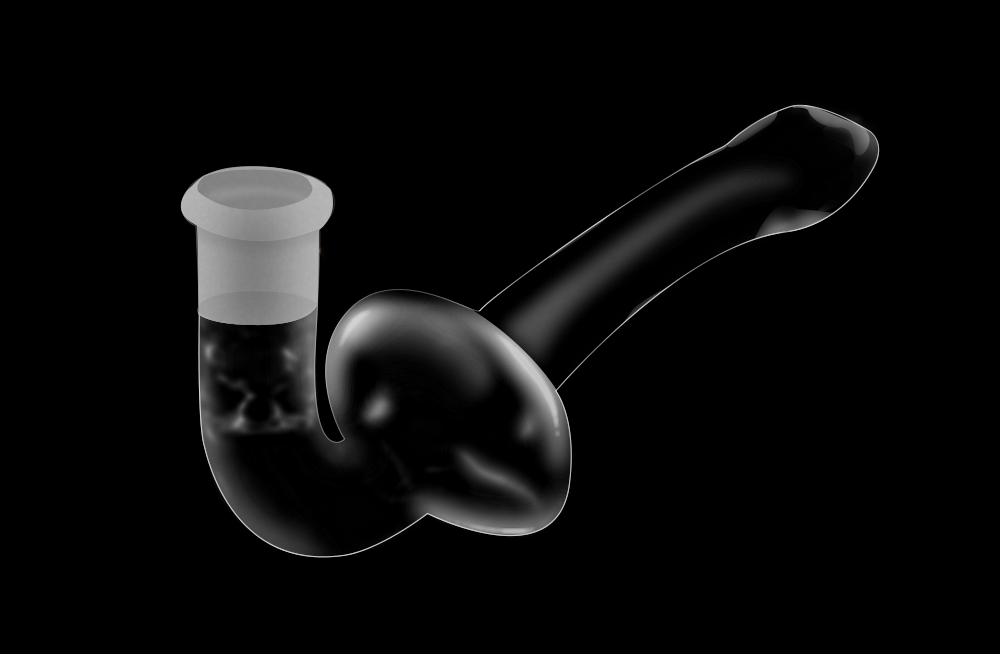
Vapor Genie – DMT Vaporization Pipe
Top methods:
- Homemade vape pen or mod (propylene glycol+DMT)
- E-mesh vapes
- Dry herb vapes with changa or enhanced herb
- Glass Vapes (Eclipse, Vapor Genie)
- Dab Rig with electric nail (controlled heat)
Sub-quality methods:
- The ‘Machine’ (small glass bottle with hole in bottom & steel wool in the neck)
- Oil Burner (the thin glass makes DMT easy to burn)
- Sandwich method (DMT sandwiched between cannabis)
- Dab Rig with Torch (hard to control heat)
- Burning enhanced herb in a joint (not as efficient as vaping)
Avoid at all costs:
- Lightbulb
- Foil and a plastic bottle
Set a Simple Intention
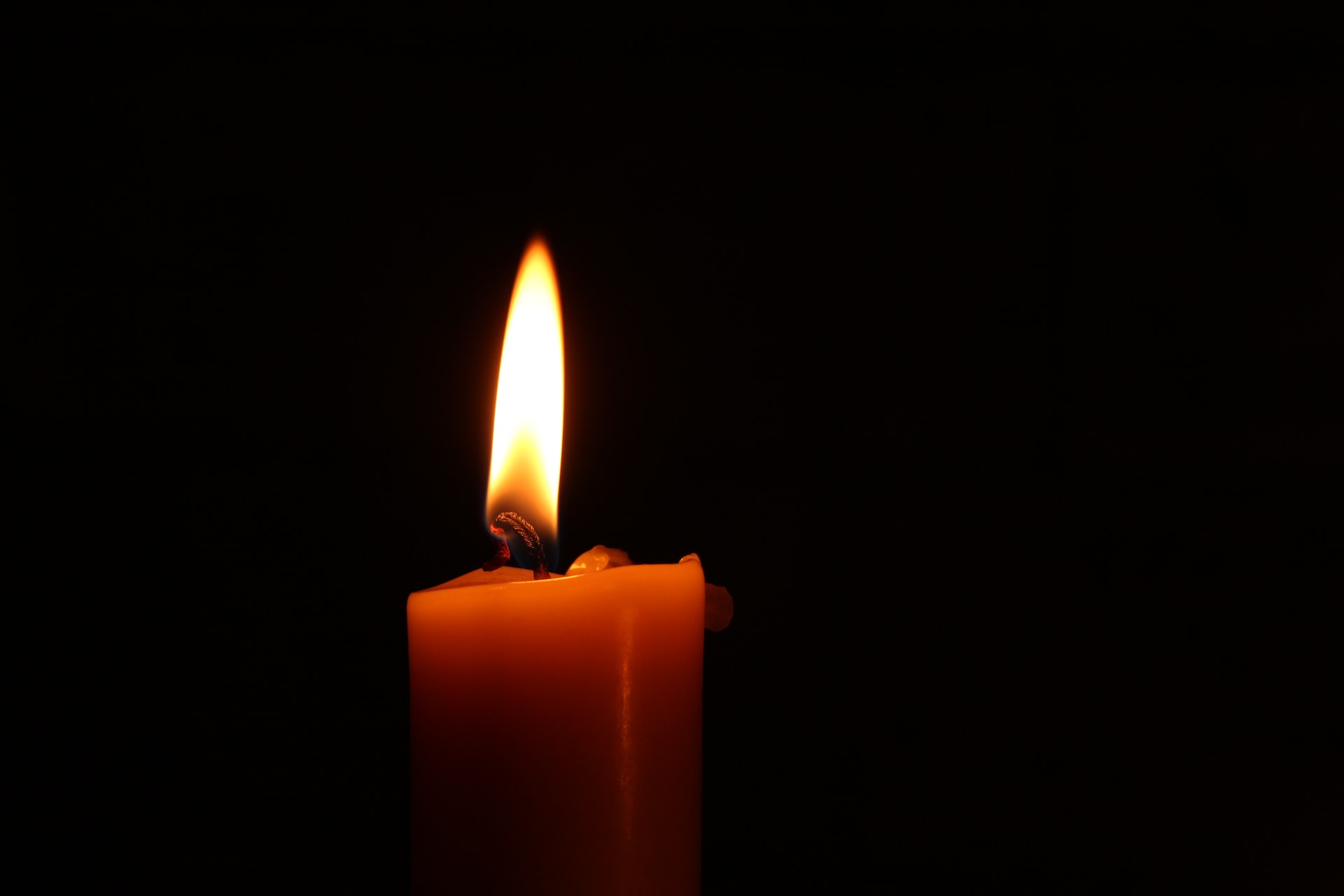
An intention does not need to be complicated: “I hope I meet an important entity”, or “I want to learn something new”.
You can write down your intention or simply say it aloud. By setting an intention, you are acknowledging your role in the future experience and helping anchor your psyche before hyperspace.
Practice Breathing
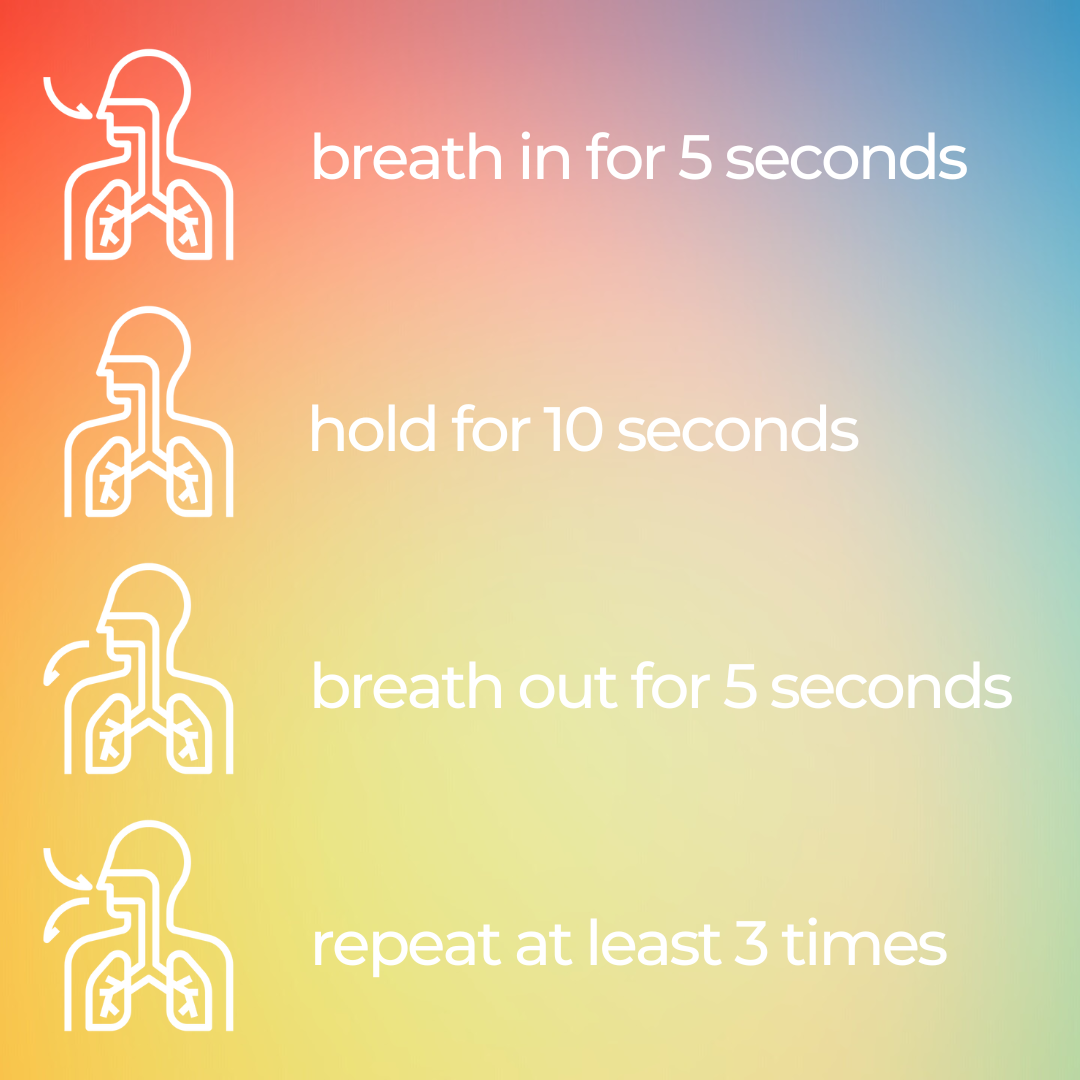
Practice your breathing.
Counting in your head, breath in for 5 seconds, hold for 10, breath out for 5.
Repeat at least 3x.
Use this time breathing to clear your head & mentally prepare for the journey.
Measure Your Dose

The doses and descriptions below are general descriptions.
The doses below are based on a moderate tolerance, pure DMT, and a 100% efficient vaping method. If you’re using a less efficient vaping method, you may need a slightly higher dose for the same effects.
Personal tolerances vary widely, and these doses may be too low for some or too high for others.
~5mg [Threshold]
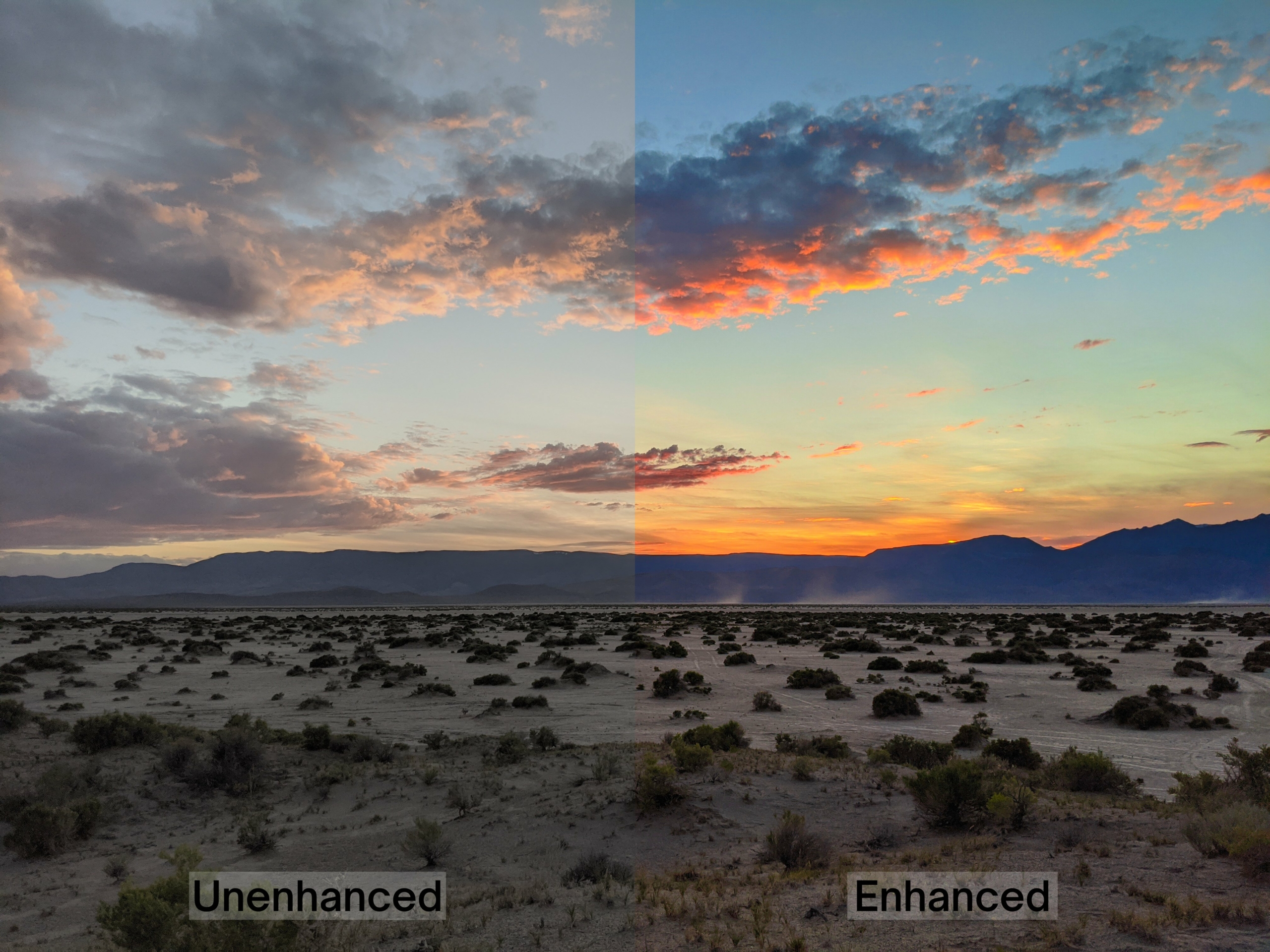
At this stage your vision is enhanced and your setting feels much more important and aesthetically pleasing. You feel slightly stoned- but with a feeling of great significance.
5-10mg [The Chrysanthemum]
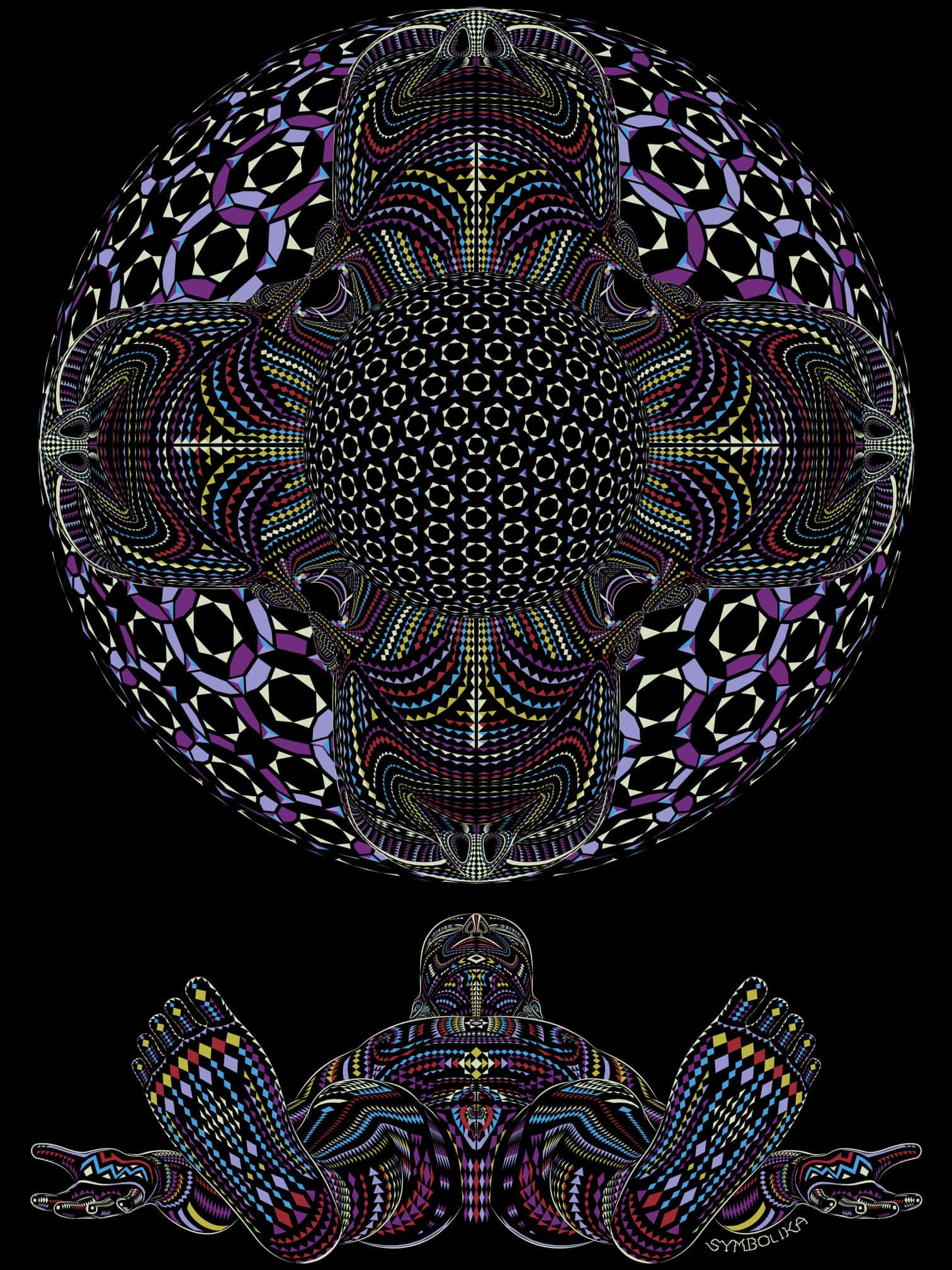
DMT HD by Symbolika @symbolika_art
Mandalic closed-eye visuals, intense colors, complex geometric overlay, visual morphing during open-eyed visuals. A body high that is euphoric but out of body, quickly growing in intensity. An organic humming/buzzing noise.
10-15mg [The Transitition]
Increasingly complex visuals, accelerated out-of-body movement, an intense body high & a feeling of being sucked towards *something*.
As the visuals increase, so does the sound. As the humming reaches a crescendo, there is a sudden switch. The humming stops. A new world is created out of the previous scene flawlessly.
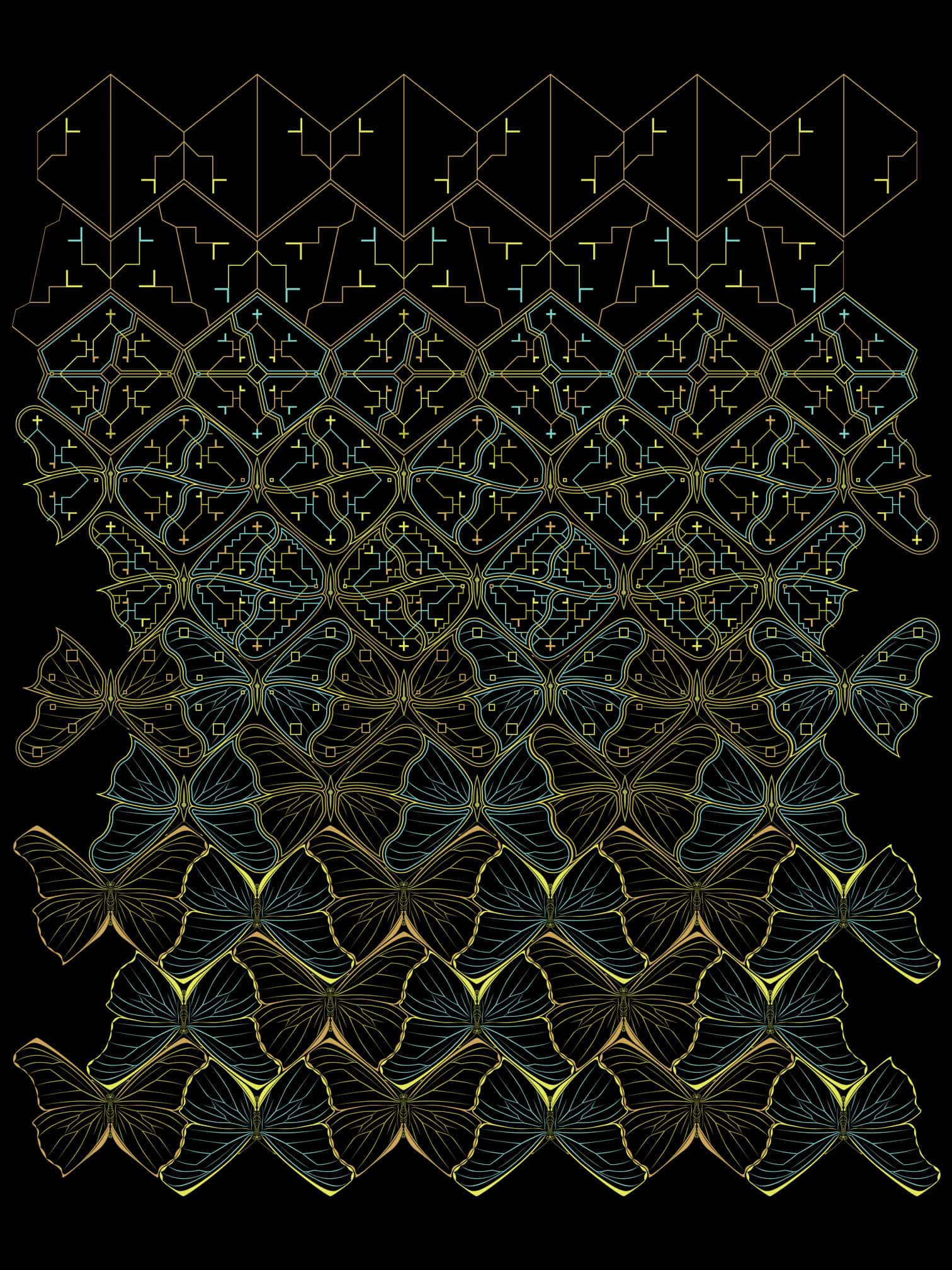
Butterfly Morph by Symbolika @symbolika_art
15-20mg [The Waiting Room]
The final space before a full breakthrough, the waiting room feels like a liminal, hyper dimensional version of ‘The Backrooms’.
At this point, if you open your eyes, your scene will not change. You are fully immersed in hyperspace.
Waiting rooms vary in style immensely and entities may be present at this stage.

Cosmic Corridors by AyJay @ayjayart
20-25mg [Breakthrough]
Hyperspace feels “more real than real”.
There is a feeling of intense familiarity combined with absolute amazement. The body transforms into intense euphoria. You will be thrust into an otherworldly environment and likely will be approached by entities of some kind.
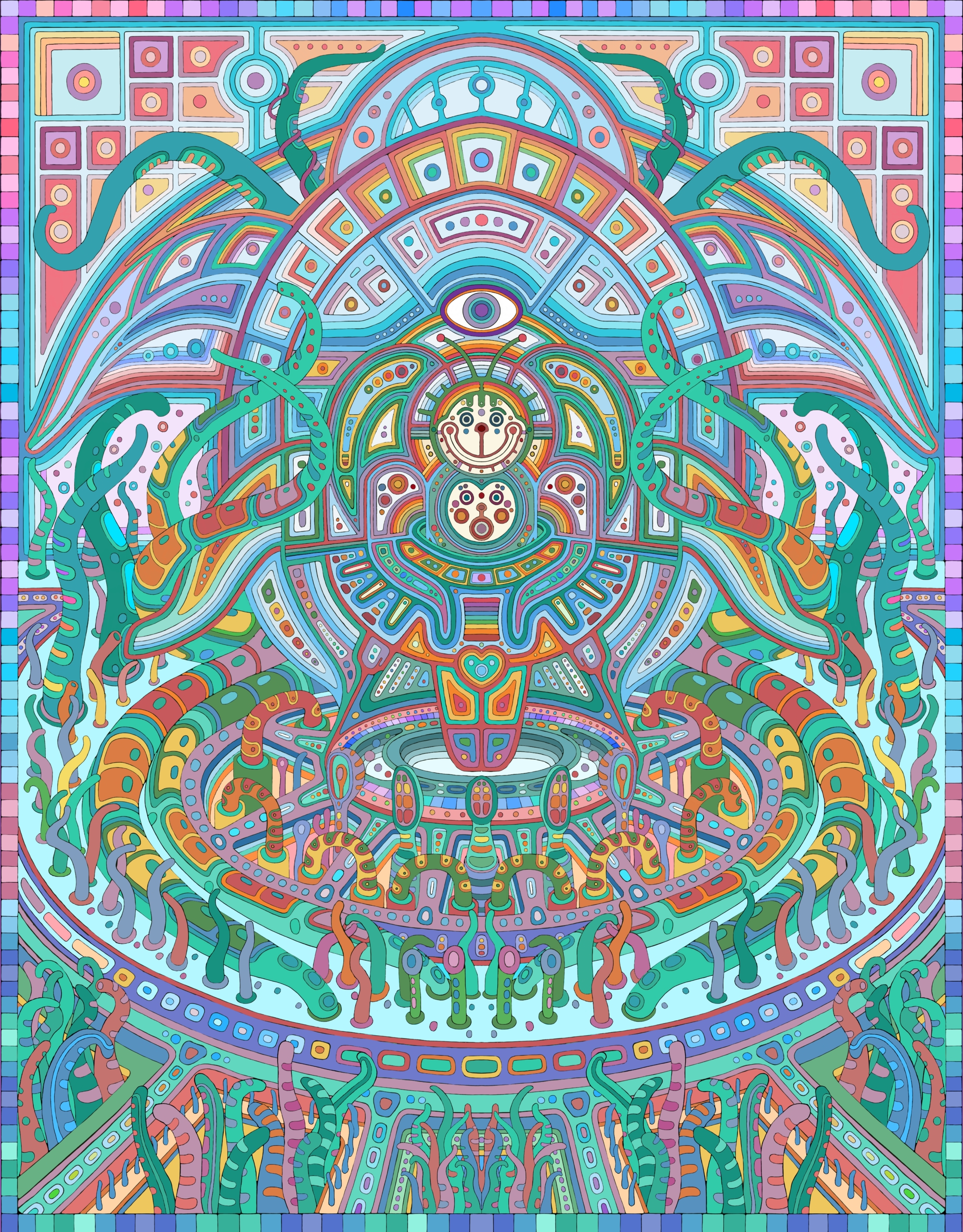
Guardian 2 by Harry Pack @harrypackart
+35mg [Approaching OD]
Taking too much DMT typically results in full dissociation and being unable to remember the experience. Overdosing on DMT isn’t dangerous to your physical body and rarely has any lasting effects on the mind.
Begin Smoking
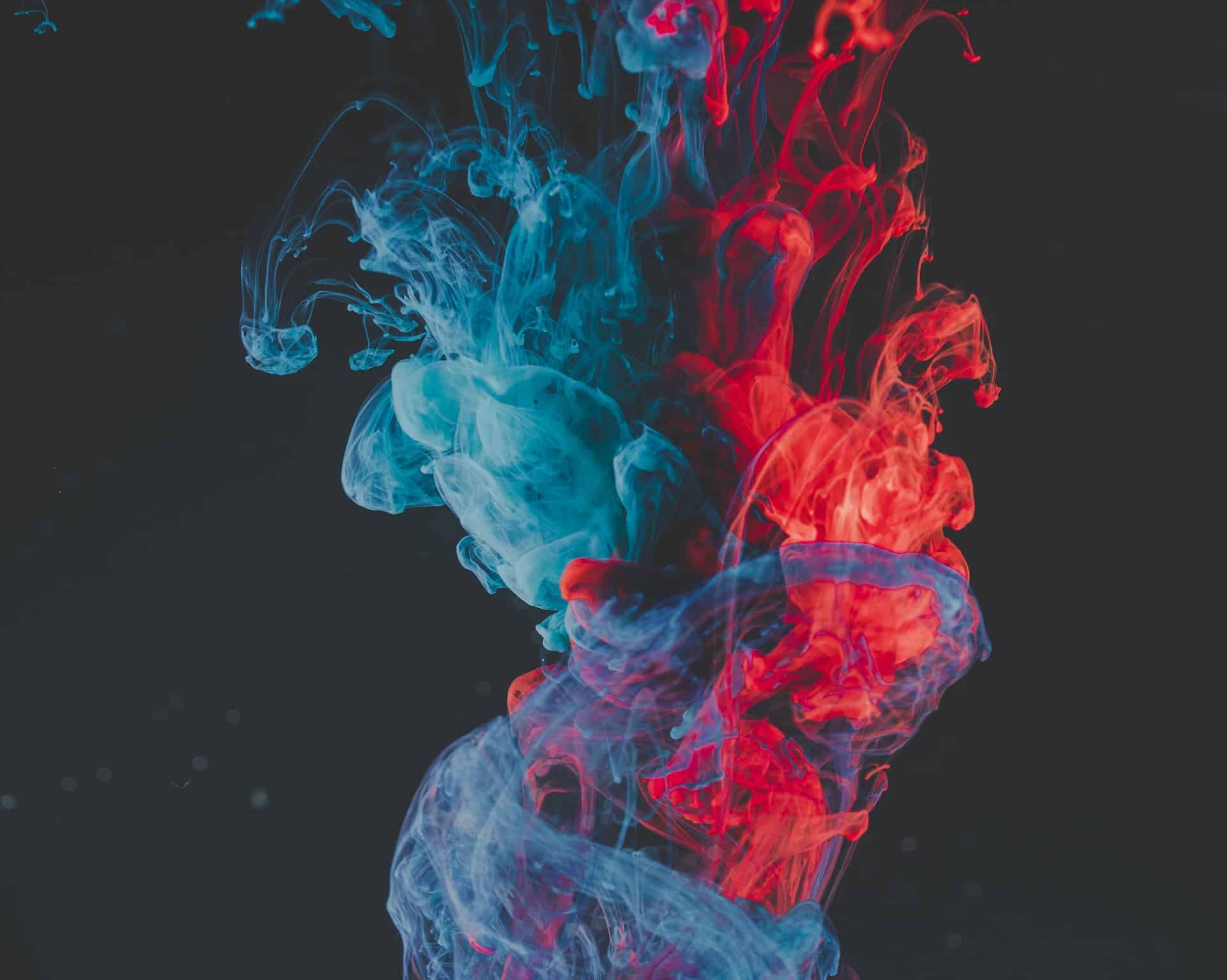
No matter your method, be careful not to burn the DMT as you heat it.
Famously, it is supposed to take 3 hits to break through. Ignore this.
Mimic the breathing practice as you take your hits- holding the vapor for 10 seconds or more with each hit. It may take 1 hit, it may take 10. Keep inhaling DMT until no vapor remains or it is no longer possible to smoke.
Don’t Panic
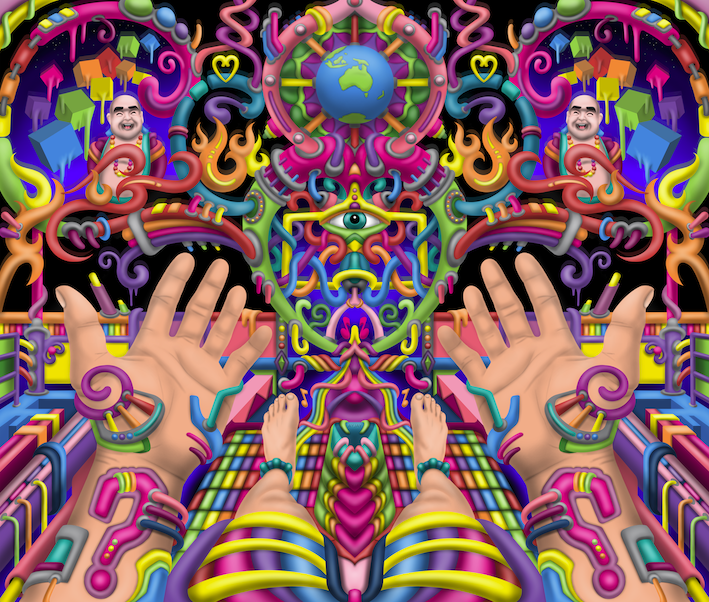
Spirit Molecule by AyJay @ayjayart
DMT is intensely disorienting, particularly when you first enter into hyperspace.
“What you resist, persists” – struggling or fighting against the effects won’t bring you back to reality. You signed up for the ride, time to buckle your seatbelt & look out the window.
Remind yourself: no one has ever died from smoking DMT and the experience will be over in about 10 minutes.

Interact With DMT Entities
About 95% of entities are benevolent and often approach you with curiosity, surprise, and love. They often say “welcome back, where have you been?” and can speak telepathically or verbally.
This is your chance to be curious- ask them questions, interact with them, who knows what you’ll find out!
Smoking DMT is like waking up as an alien, to a room full of other aliens who are throwing you a surprise birthday party.
'It's so great to see you again!"
"Look at my gift for you!"
"We've been waiting so long for you!"
"We love you so much, you're doing great!"— The Archaic Revival (@FatherMcKennaa) May 10, 2022
Different Entities
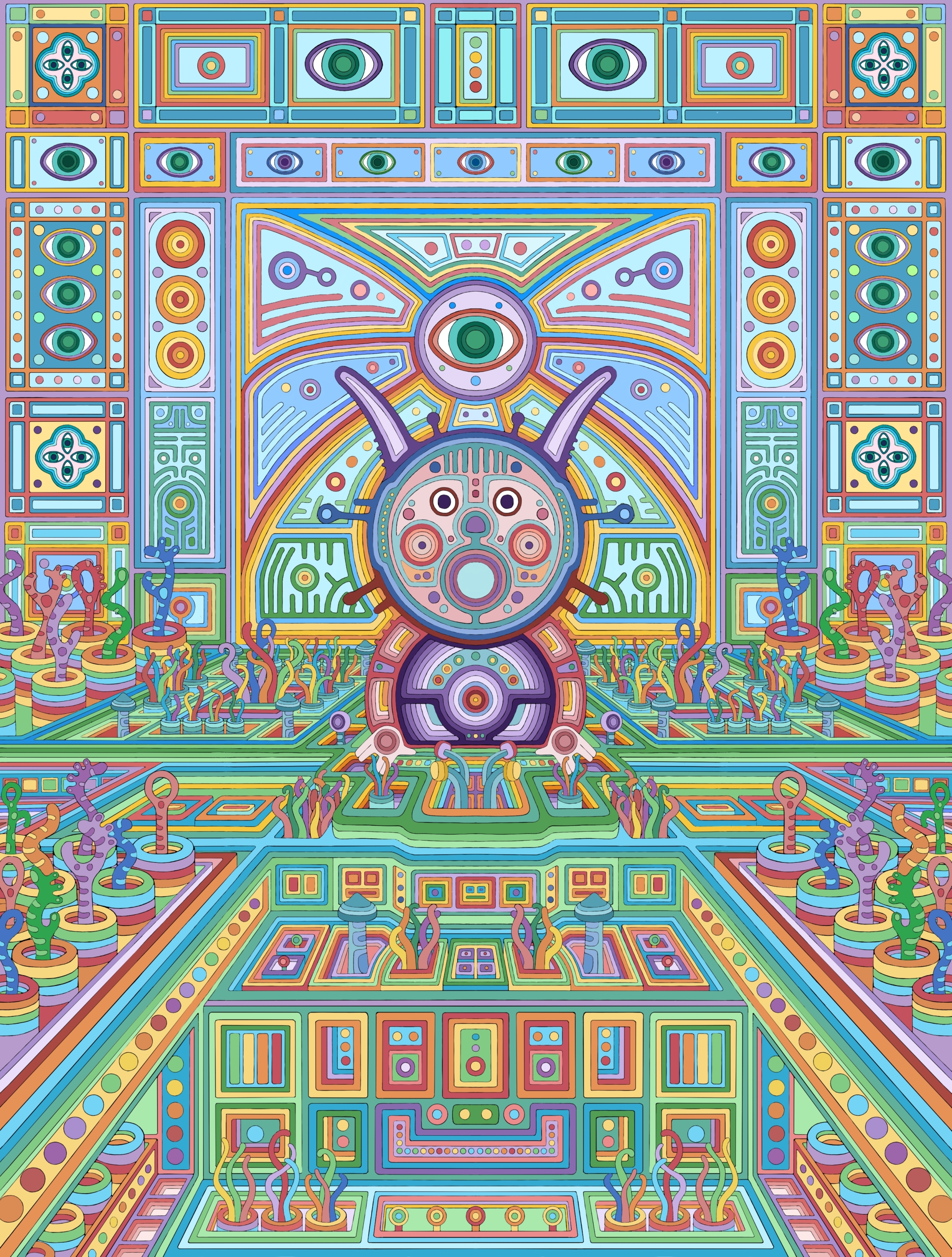
Hieroglyph by Harry Pack @harrypackart
There are a huge variety of entities, and essentially no limit to the different forms they take.
There are a few common types like Machine Elves, Fairies, or Jesters. Mythological and archetypal creatures from various cultures are another common type of entity. Entities vary in not only appearance but also motivations and power.
Some have the ability to create objects with their voice while others simply want to help you learn about yourself.
Dark Entities

Aya by Symbolika @symbolika_art
While rare, simply thinking about dark entities makes them more likely to appear.
They appear more often when you don’t treat DMT with respect. Seasoned travelers call these uncomfortable experiences (not always related to dark entities) being ‘hyperslapped’. If you do end up running into an entity with dark energy, focus on feelings of hope, love, and light.
Explore & Learn
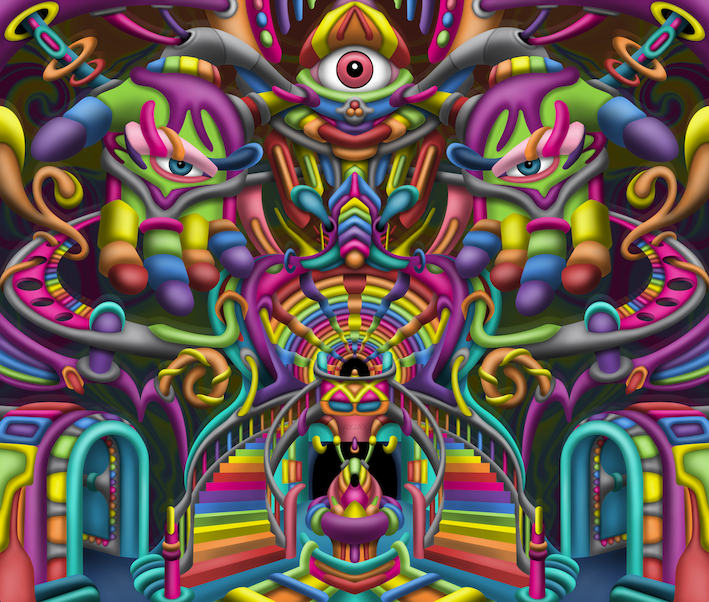
Celestial Stairway by AyJay @ayjayart
Every DMT trip is different, though some people have traveled to the same places and met the same entities.
Approach each trip with curiosity, entities often have something to show or teach you. Sometimes what they show you is so complex that it can’t be explained with conventional language. You can also try to learn things on your own by traveling through different environments and not interacting with the entities.
Record Your Experience
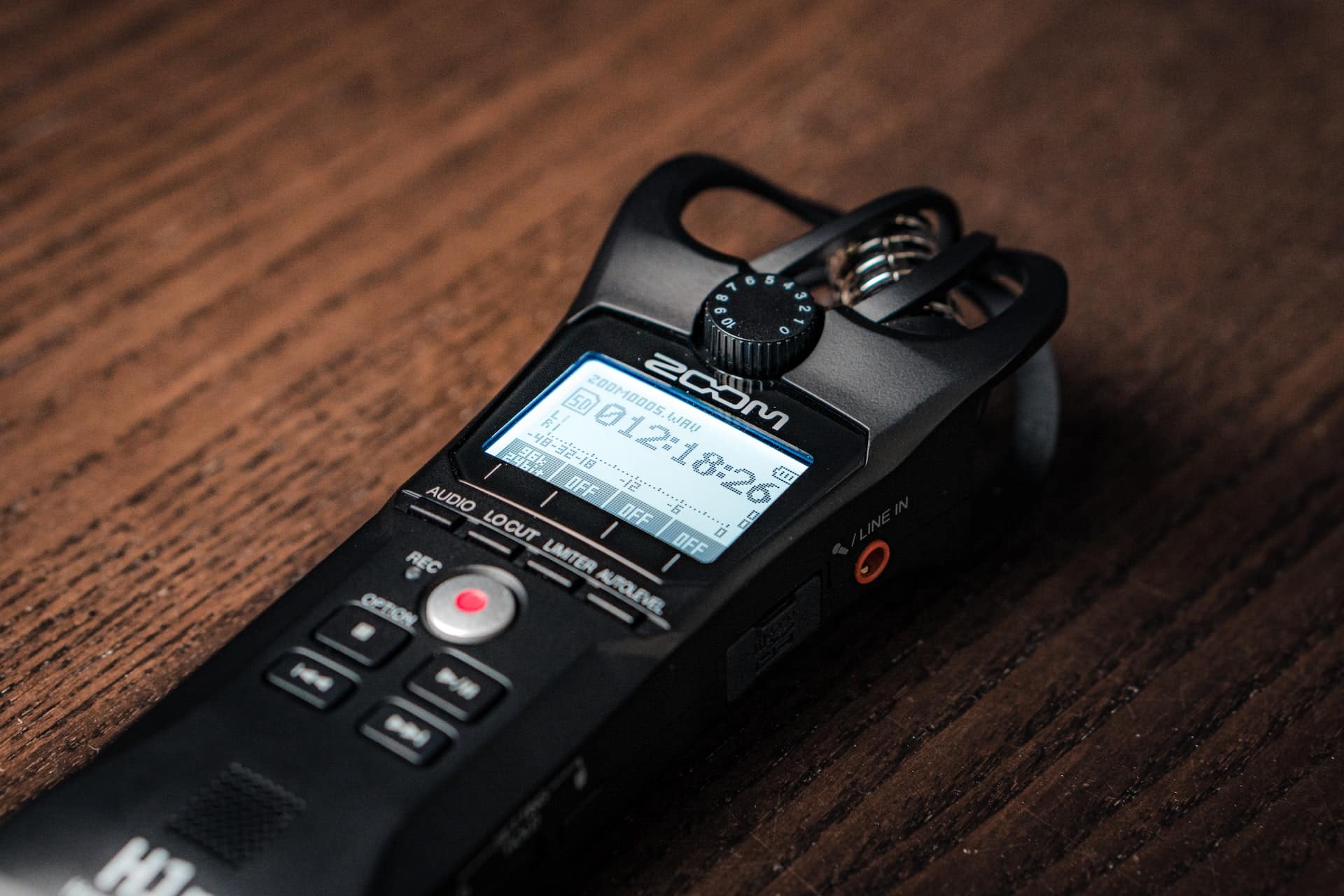
Just like a dream, a DMT trip begins to be forgotten the moment you wake up.
Use a journal, voice recorder, digital method, or create art to begin recounting your experience. This can be valuable information for personal development or for other travelers.
Share Your Experiences

If someone had the key to alien communication, wouldn’t you want to know about it?
Share your journeys on online forums (Erowid/Reddit/DMT Nexus) and with people that you trust. The entities try so hard to communicate and have important things to share, the least you can do is to help them out a little!
My sources were personal experience and “Hyperspace Lexicon” on DMT Nexus.
Best wishes
Thanks for reading. I hope this guide helps you explore hyperspace in a safe, fun, and efficient way. DMT is a challenging yet incredibly rewarding entheogen. If you enjoyed this article, please follow me on Twitter @FatherMcKennaa
I discuss drugs, psychedelic culture, and will hopefully have another article out soon.
Also a huge thanks to the artists Harry Pack, Ayjay, & Symbolika who graciously allowed us to use their art and do a great service through their visionary artworks. Finally, thanks to John Robertson who inspired and assisted me on this article!
Credits
The Archaic Revival
I write about the history, culture, and use of psychedelics and other drugs. My goal is to educate others, promote safe entheogenic use & advocate for drug decriminalization and related policies.
Twitter @FatherMcKennaa
Harry Pack
My work encourages the viewer to turn their mind from the fragility of the material world and towards a contemplation of something more stable and infinite. The kaleidoscopic paintings depict a visual realm at once fantastical, foreign and strangely familiar. Three-dimensional, dream-like landscapes composed of fractal shapes and ordered geometric patterns are populated by extra-terrestrial forms: strange humanoids, anthropomorphic machines, animals and plant-life moving purposefully throughout spaces that operate as portals into the personal and psychological.
Symbolika
Fabian, the creator of Symbolika, is a graphic designer who has turned his passion for psychedelics into a unique clothing brand. As a “psychonaut”, he has explored the depths of the mind through the use of psychedelics and has drawn inspiration from his experiences to create bold and vibrant designs. He has combined his skills as a graphic designer with his love for psychedelics to create a brand that is both visually striking and spiritually meaningful. Symbolika’s clothing is a reflection of Fabian‘s personal journey and his desire to share the transformative power of psychedelics with others through his designs.
Ayjay
Ayjay is an Australian digital artist known for incorporating his psychedelic experiences into his art. His work stands out for its vivid and precise representation of the DMT experience. His art showcases the bright colors, strange entities, alien machines, and patterned surfaces characteristic of the DMT world.
The post The DMT Hyperspace Travel Guide appeared first on Maps of the Mind.
]]>The post A Participant’s Perspective on The Conscious Psychedelic Explorer appeared first on Maps of the Mind.
]]>If you’re interested in joining the program, I hope this will give you an idea of what you can expect from the experience. More information can be found at the bottom of this post.
Enjoy!
–
John:
Where were you before the course versus where you are now?
David:
Before the course, I had three sessions of MDMA for the treatment of PTSD. I think maybe one or two low doses of psilocybin, and really only having one point of contact with this whole psychedelic space other than just my self-inquiry of googling and that type of stuff. But I had a really strong desire to be part of a growing community where I can learn and share. Being part of a tribe or a community, you know, being part of a group with a shared interest. I could sense the benefit that would have.
So as I was searching, that’s how I stumbled across that podcast [Mind Meld], John, where I saw you being interviewed and talking about this upcoming course. I don’t know if it was serendipity or what, but I just happened to find this when I was looking for it.
I now feel like I have a strong community of friends. Ryan [another member] and I were talking about that. I’ve never even met the people in our group in person, but I feel like I have a stronger friendship with most of the folks that are on the call than some of the people who live close enough that I can get in my car and drive to them, but with them I don’t have that sense of shared interest or connectivity.
So where I was, was seeing the promise, searching for how I can learn more, to where I’m at today.
Today I’m feeling like I’ve come quite a ways. I’ve developed a group of friends who I can continue to learn with in parallel and share ideas and continue to grow. A lot has changed in the course of just really a very short period of time for me.
J:
Maybe some overlap here, but what has been your biggest win or result from taking the course?
D:
Well, there are a number of qualifiers…
You know, when I was struggling with anxiety and PTSD, and depression, I felt so isolated. So isolated, so alone, so closed off. The biggest win for me is I feel so much more open. Naturally open. Not like I’m trying to force this opening. The biggest win has been this sense of connectivity.
And a general interest in learning and sharing. And with the community, there’s not that sense of “Oh shit, I shouldn’t say that, or I’m going to be judged for this, or what are they going to think if I ask that?”. That’s not there. There’s such a sense of symbiotic learning.
J:
I love that, and totally have the same sense. What has been your favorite part of the course?
D:
I can’t just say “this is my favorite part” because my favorite part truly was the course and everything that it is comprised of, all the components of the course. Your deep knowledge and willingness to share, your thoughtful weekly presentations with an honest desire to help, and to follow through. Bringing in a group of such diversity together with that singular interest, which is really, self-exploration using these various tools.
And even though the course is over, to me it doesn’t feel like the other courses that I’ve taken over my life where, you know, I’ve got my report card, I’ve got my grade, boom, now I’m moving on to the next thing. To me, it seems almost like a chapter has closed and it’s just going to be naturally a continuation with the group. It is a group of explorers that have assembled here.
J:
I feel the same way about it the continuation and I’m looking forward to seeing where it goes. What would you say to someone who is on the fence about purchasing the course?
D:
Get off the fence. Take the course. I would be so direct. I’d maybe choose words differently. But this is coming from a professional procrastinator. This course is the one thing that I just didn’t procrastinate on. I said, you know, I’m just going to do it.
If anyone is on the fence. I would say, the fact that you’re thinking about it. Trust that intuitive thought and for whatever reason you’re on the fence, put that on the back burner, take the course, and then judge for yourself whether it was the right thing to do.
Take the course, then judge based on experience versus projecting whatever hesitation you might be putting on to it based on past experience. Just experience it. I can’t imagine anybody coming through this course who isn’t willing to put in the work to learn and participate.
Friends aren’t given to you. Knowledge isn’t given to you. Community isn’t given to you. It’s what you invest. And to me, as I look back on 2022, this is probably going to be one of the things that I’ll remember most, because, again, I think it’s just the initial chapter of what I hope to be volumes of in the years to come.
–
The Conscious Psychedelic Explorer opens again soon an the course begins on the 19th September.
If you have any questions about the program, go ahead and email me at [email protected]
Key Program Details
The Conscious Psychedelic Explorer is a 6-week step-by-step program that teaches you how to prepare for, set up, and integrate meaningful psychedelic experiences to help you harness personal insights, access healing states, and accelerate your personal growth.
Core Program
- 25+ Pre-recorded video lessons
- 6 Weekly live community calls
- Weekly meditation, journaling and practical planning exercises
- Weekly emails to stay on track
- Access to a private CPE Signal group
- Workbook, templates, and extra resources
Dates for Live Calls
All calls are at 7pm UK time / 2pm EST / 8pm CET on:
- Tuesday September 19th
- Tuesday September 26th
- Tuesday October 3rd
- Tuesday October 10th
- Tuesday October 17th
- Tuesday October 24th
Outside the 6 week period, community calls for all CPE alumni continue on a monthly basis throughout the year.
Bonuses
There are a whole bunch of bonuses, including:
- 4 Quarterly workshops in 2024 to learn and connect in community
- Guest masterclasses and experiences on topics like neuroscience, research, setting, and music.
- Living database of music playlists for psilocybin, LSD, MDMA and ketamine (Periodically updated)
- + more
Price
$497
The post A Participant’s Perspective on The Conscious Psychedelic Explorer appeared first on Maps of the Mind.
]]>The post The Conscious Psychedelic Explorer | Member Case Study appeared first on Maps of the Mind.
]]>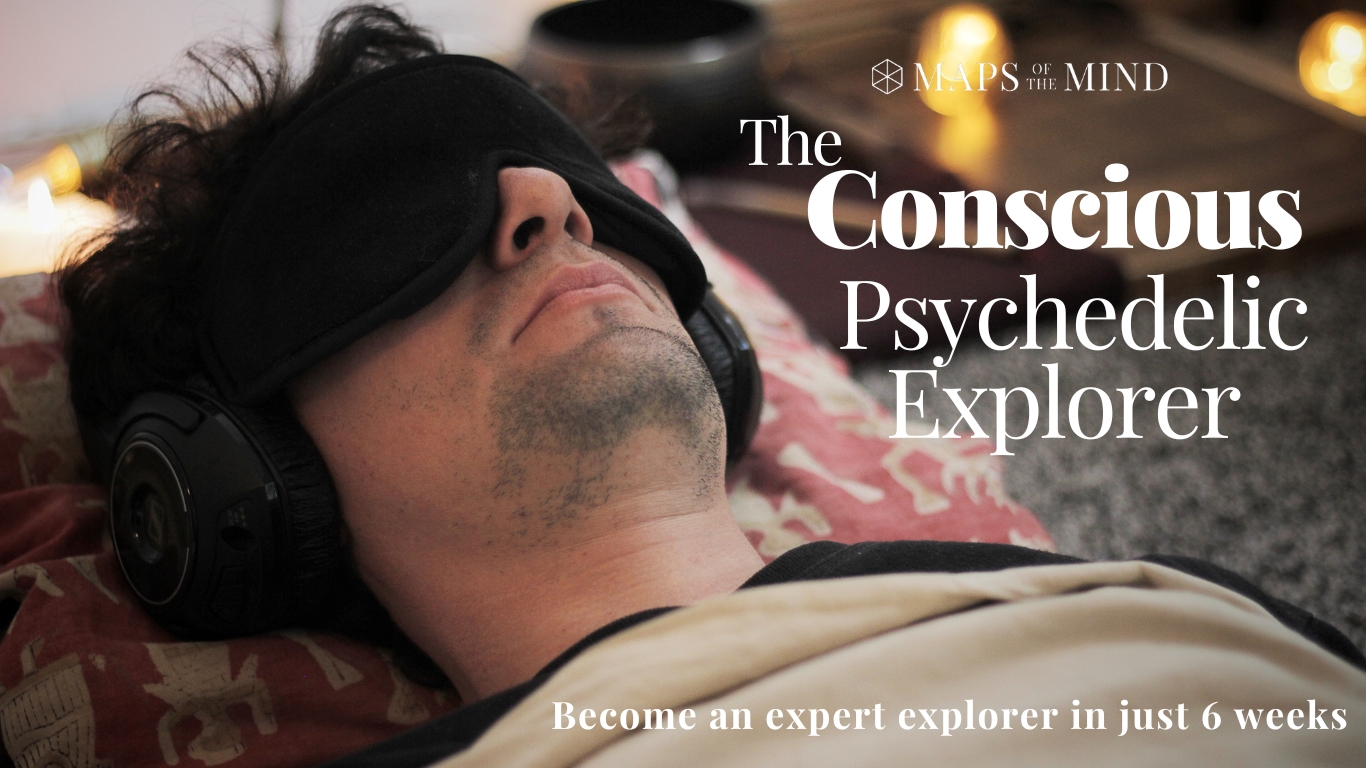
A member from the last cohort recently reached out to me to report back after embarking upon their first session since completing the program. Their email message displays a shining example of some of the lessons from the course being put into practice, and so with their permission, I share their write-up here.
To me this just shows exemplifies a careful and respectful approach to a psychedelic session duly rewarded. I hope it can inspire you in your preparation too.
Here’s the report:
–
I wanted to reach out directly. My experience yesterday was the culmination of over 3 years of therapy and 2 years of working with psychedelics. It was by far the deepest and I know holds the most potential for change of anything I have ever experienced.
I used a lot of what I learned in your course to plan and carry out this experience, with that you absolutely had a role in its success. For that, I say thank you! I appreciate that you took the time to put it together and your passion in presenting.
I wrote the below “trip report” in the day leading up to and yesterday. I did want you to see it though so you could see some of your work in application.
Spoiler alert, I personally don’t think it is productive to read “Trip reports” of other people’s experiences. I have done this in the past and it has only led to me second-guessing or trying to drive my experiences because of what I thought they should look like.
I am thoroughly convinced each experience is an individual gift and no two will be the same. Past that, every time I have tried to describe what took place in one of my experiences I sounded like this crazy old man, well more than normal anyway, so I quit trying.
This report is an outline or “report” if you will of what I did leading up to what I consider a very successful, productive experience. Not that following my path will make your experience successful but perhaps you can see some actions that may make it better for you as I did in John’s course.
Intention.
I got my intention about 3 months ago. That is typically how I work; it will just come to me at some point, and I will know it’s time to start prepping for the next experience. My intention for this experience was to “Work with and address my inner trauma”. Sounds like a party, right? Well to be honest this was obviously going to be shadow work, I had a distinct inner comfort in the prospect of healing in this way.
It took me over 3 months to schedule the event due in part to my internal preparation. I have found that if I spend some time trying to refine and get my head around what I think the details of the intention are I will be better prepared on the day of the healing. I also had some scheduling challenges to get through.
Medicine.
I only have experience with Psilocybin and MDMA, I have heard Psilocybin described as “Spiritual” and MDMA described as “Psychological”, that description settled in well with me. In this case, I saw the healing as more of a dialog and integration of my trauma so in my head MDMA seemed to be the perfect fit. I reflect as much I can on the chosen medicine and its mechanisms as I work on my intention.
For this event, after I had decided it needed to be scheduled I revisited our course material. Trying to incorporate as much as I could as I re-listened to the content.
Schedule the day.
I did choose, for this event to schedule a day. I discussed it with my wife, we agreed on a day, I cleared my calendar and we both worked to protect that day from being rescheduled.
Agreements.
I made the agreement to accept the music for what it is and enjoy what it brings. Most of you have heard me talk about music, it has been a bit of a challenge for me. For this experience I made the agreement that I would accept what was in the chosen playlist unless it was completely taking me sideways.
Next, I agreed to go to the bathroom when I first noticed the need. This was brought up in the course and hit home with me.
Clearing.
As inspired by folks in this group my first clearing exercise was the decision to be open with my kids about my activities. This cleared a lot of emotional baggage as well as the day. My scheduled day was a Saturday. I have always scheduled during the week and typically in the evening or nighttime to avoid interaction with my kids.
I also worked to clear my work calendar so the Friday prior to my event was an easy day. The most prominent thing here was to reschedule a touchpoint meeting with my boss. We don’t always see things the same and I didn’t want to risk the drama just before to my event, so I rescheduled. The upshot to that was I had the call earlier in the week and it was a positive interaction.
Self Care.
Starting the Sunday before I chose to abstain from alcohol, I typically do this for 24 hours prior to my events but started early this time to evaluate my relationship with alcohol.
Tried to eat cleaner for the week leading up to the event. To say I ate clean would be stretching the truth, ok, it would be a lie, but I did do much better.
Gave my room a thorough cleaning the Friday before, including clean sheets on the bed and a clean towel for my ritual shower prior to taking the medicine.
Abstained from sex beginning Thursday night. MDMA elicits a serotonin dump but so does sex. To ensure I have serotonin to dump I try to keep the storehouse full prior to taking the medicine.
Made it a point to get to bed early so I would be well-rested for my event. No real reason to be up late after that last step anyway, right?
Starting Friday morning, no news, no talk radio, no social media, and no TV.
I typically get up early, meditate and read for an hour. I refrained from reading the day of the event. I want to focus on my intention, and I get easily sidetracked so no reason to possibly introduce some new concept that may take me off my path.
Ritual.
- Wake up at about 7 to meditate. I will have coffee and maybe a few almonds very early but stop liquid intake at least an hour before I take the medicine, back to that not wanting to get up to go to the bathroom thing.
- I will get a “purge vessel” cool name for a Home Depot 5-gallon bucket. I place this right next to the bed. I have, thankfully, never had to use it but I like that it’s there.
- Make the bed up with my pillows and an extra blanket.
- Lay out the headphones.
- Download my playlist, I use Spotify. In the Spotify settings on your device, you can set the download quality to high. I have mine set to high, not sure if there is a difference or not?
- Download a backup playlist. I know, I am not forgetting my “agreement” but you can’t be too careful
- Download another backup playlist, going to be REALLY careful.
- Take the device I am playing music on off the network
- Sit down and journal my intention, trying to allow it to flow and allow any details or the story to unfold as a write. I do this just until the natural flow has stopped.
- Take a shower.
- Measure out my medicine and the booster into two shot glasses.
- Give my wife my phone.
- Take initial dose, followed by the booster in 2 hours.
Integration.
Integration begins the night of the event. I journal for integration and will continue doing that in the days/weeks that follow an event.
I can say with calm certainty that this was the deepest event I have ever had, with what I consider the most potential for change. The work to integrate it will determine how much of it I get to keep.
–
The Conscious Psychedelic Explorer is open, come join us inside!
More information can be found on the course page.
If you have any further questions or would like to talk, feel free to send me a message directly or book a call.
The post The Conscious Psychedelic Explorer | Member Case Study appeared first on Maps of the Mind.
]]>The post Techniques To Handle Anxiety During Psychedelic Trips appeared first on Maps of the Mind.
]]>AKA how do I stop a bad trip?
This question comes up again and again, so I thought I’d pool together some techniques for you curious seekers.
It can vary for different people, but here are a few methods, many of which can be combined:
You’re Human
I think the first thing to say before getting into specific techniques is that the feeling of anxiety can happen to any of us.
If you feel anxiety during your trip, it doesn’t mean that something is wrong with you or your experience. It’s actually pretty common.
It’s not every day that your whole world is dissolving around you and you feel like you’re dying. A bit of anxiety can be expected. It doesn’t mean you will remain anxious or fearful, or that the experience won’t morph into something else. Psychedelic experiences can be very dynamic and your experience can entirely change in a matter of seconds.
Remember, like all feelings, anxiety can and will pass...
Remember It Will End
Both the feeling of anxiety and the trip itself are temporary.
Just remembering that can be very reassuring and help take the heat out of the most acute anxiety.
Say ‘Bring It On!’
Anxiety is a high-arousal state. Before trying to calm yourself down to a low arousal state, it can be easier to initially shift sideways to another high arousal state: excitement. Rather than nervously thinking ‘oh shit, what’s going to happen?’, try instead to come at it with a sense of wonder and excitement, and think ‘oh baby, what’s going to happen? Bring it on!’.
Relish the adventure you’re on. Don’t resist it, embrace it.

You can practice this outside of your journeys. Every time you feel some nervousness about leaning into an edge, train yourself to smile and say ‘bring it on!’. This cultivates the bold explorer’s mindset. It’s also pretty fun.
Once you’ve remembered you’re on an adventure, that you signed up for a non-ordinary experience and now you’re having it and going to embrace it, it might actually serve you to center and calm down a little.
Breathe
Take long, slow, deep breaths.
This has a physiological response that calms the nervous system down.
Breathe in deep, down into your belly. Use diaphragmatic breathing, filling your belly before your chest. If you’re lying down, your stomach should rise.
As you breathe, you can rest your attention on your breath. Aware when you breath in, aware when you breathe out.
Breathwork
Some people like specific types of breathwork. This can mean breathing in a specific rhythm.
For example:
- 4-4-6-2
Breathe in for a count of 4, hold for 4, exhale 6, hold for 2. - 5-2-7
Breathing in 5, hold 2, breathe out 7.
Breathwork is a whole other beast and can also be used to intensify experiences, but I’ll leave that for another day. Basically, try and find something which works for you.
Try a simple 30-second one from Calm here.
One thing to bear in mind when doing controlled breathing is that you want to avoid building any tension that may come about from controlling with your breath. This will be counterproductive. If it is difficult to do your chosen pattern of breath, I’d recommend just trying to slow your breath down generally, rather than strictly following any type of pattern.
Relax Your Body
It can also help to systematically relax all the muscles in your body. Relax the muscles in your face, then your neck, then your shoulders, and so on. I find it helpful to relax one body part per cycle of in-and-out breath.
- Breathing in – relaxing the muscles in my face
- Breathing out – relaxing the muscles in my face
- Breathing in – relaxing my shoulders, allowing them to sink down
- Breathing out – relaxing my shoulders
and so on.
Change Your Posture
Some people find specific postures to be helpful. These can help connect to a place of safety, strength or power.
For example:
- A ‘bring it on’ open posture, such as lying down, legs open, and hands behind the head
- One hand over the heart (can be combined with mentally connecting to one’s heart centre)
- Prayer hands infront of the chest, or forehead
Pray
You can also actually pray, or just ask for help from whatever you pray to.
“The function of prayer is not to influence God, but rather to change the nature of the one who prays.”
– Soren Kierkegaard

Hum, Make Sound, Sing, Use Your Voice
This is one that was brought up by one of the members on the last round of The Conscious Psychedelic Explorer course. Whilst experiencing some uncomfortable feelings on a group retreat on an experience with psilocybin mushrooms, they were taken to a private space where they felt less inhibited to make noise and tried humming. “The difference was night and day”.
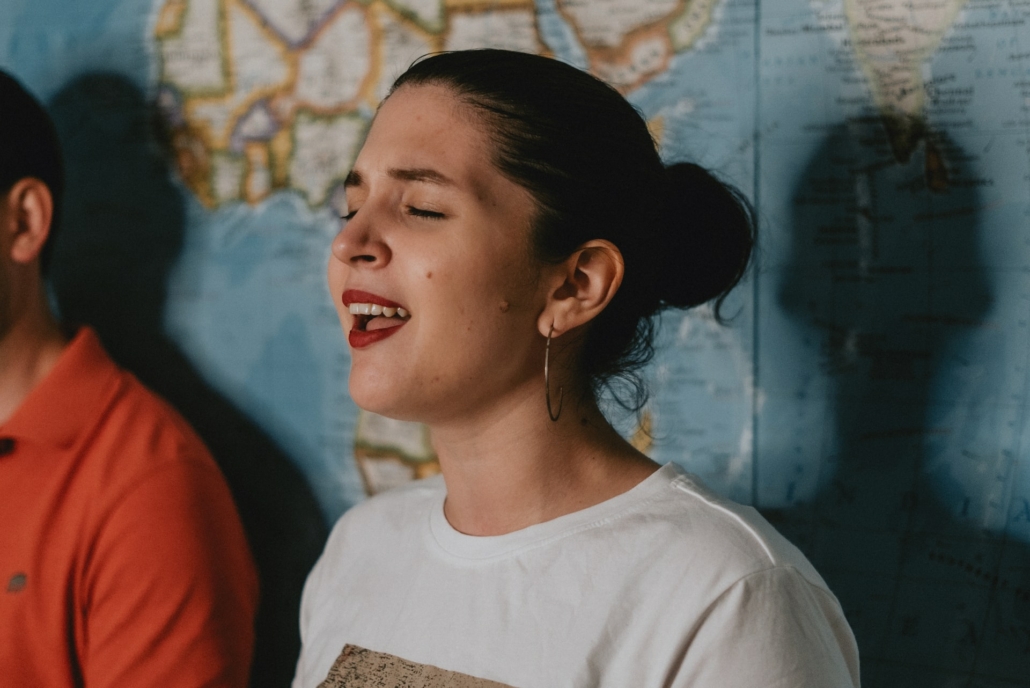
This creates vibrations that stimulate the vagus nerve and signifies safety to the nervous system. This triggers a state of well-being and relaxation.
This can also be combined with long breaths. One I’ve used to soothe myself during the jitters of an MDMA come up is to take a nice deep breath in through the nose, and then a long slow mouth-closed exhale combined with a low hum. I can feel the vibration inside, which is somehow comforting and warming. I’ve found this to work very quickly.
Take a few seconds and try it for yourself now and see what you experience. You might just equip yourself with a new tool to take on your next journey.
Recite a Mantra
Some people also find it helpful to recite a mantra.
For example:
- “I am loved, I am safe”
- “I am not my fears, I am not my thoughts”
Choose one that feels right to you.
Final Thoughts
Anxiety is typically at the core of a ‘bad trip’. It can be tied in with our resistance – the big no-no of navigation.
Besides the oft-quoted but very true and pith instruction of ‘surrender’, these are some practical techniques you can use. You can combine them, and try them for different types of sensations (i.e. come-up anxiety, trip peak anxiety, dreaded realization anxiety AKA uncomfortable truth, and yes day-to-day anxiety).
Long term I always come back to recommending developing some type of meditation and mindfulness practice. It will help you to notice anxiety and employ these techniques more quickly and effectively.
Best of luck out there.
The post Techniques To Handle Anxiety During Psychedelic Trips appeared first on Maps of the Mind.
]]>The post Punk Ethos & Psychedelic Practice appeared first on Maps of the Mind.
]]>Punk.
Punk music?
Absolutely.
But more relevant to my psychedelic work; punk ethos.
Punk and its associated ideas have played a huge part in my growing up, my identity, and the person I’ve become. A lot of the values I hold are also shared by punk as a movement.
If you think punk is all about people getting angry and shouting “fuck the system”, I’d like to show you that there is much more.
Here are some crossovers between punk and psychedelics.
Non-conformity
Punk challenges conformity. It challenges the norms of society. In a world where we’re burning our own house down, where corruption and inequality are rife, I think it’s a good time for us to challenge a few social and cultural norms.
If I conformed to the rules of the world, and the laws set in place by governments, I never would’ve started on my psychedelic journey. I never would’ve been able to receive these beautiful, wonderful, and healing experiences.
I never would’ve become able to help others on their psychedelic journeys either.
“One has not only a legal but a moral responsibility to obey just laws. Conversely, one has a moral responsibility to disobey unjust laws. Any law that uplifts human personality is just. Any law that degrades human personality is unjust.”
– Dr Martin Luther King
Anti-Authoritarianism
Punk as a movement is anti-authority. It allows people to form their own beliefs rather than being handed them by people who are in positions, or supposed positions, of authority. Punk encourages you to question authority.
Do you believe what you believe because this belief has been passed on to you? Or have you come to this conclusion yourself through your own reasoning, agency, and experience? Punk encourages us to become our own authority and to discover truth for ourselves.
Psychedelics encourage us to find our own truths too. They help us to face truths, sometimes they will reveal them even if they’re f-ing uncomfortable.
Emotional Expression
As a genre of music, punk is pretty expressive.
Punk doesn’t repress. Punk lets it out and lets it rip.
And psychedelics encourage this in us too. Psychedelics do not reward suppression or repression of our deeply held emotions or beliefs. In fact, they punish them. They will often squeeze them out of us. Even those which may seem to be pretty full-on.
Some say punk is all about needless anger, for me it’s about standing up for what you believe in and being honest with yourself about things that you’re not cool with. It’s about not having your boundaries crossed.
As Pema Chödrön says, there is compassion, and then there is idiot compassion:
“For example, trying to smooth everything out to avoid confrontation, not to rock the boat, is not what’s meant by compassion or patience. It’s what is meant by control. Then you are not trying to step into unknown territory, to find yourself more naked with less protection and therefore more in contact with reality. Instead, you use the idiot forms of compassion and so forth just to get ground.”
Psychedelics encourage acceptance, but likewise, there is acceptance and then there is idiot acceptance. Idiot acceptance is pretending we’re OK with things and that it’s all love and roses when it’s not, it’s being soft when we actually need to draw a line.
DIY
Finally, something that comes from the punk movement but for me is very relevant to my psychedelic practice is the DIY ethic. With various organizations looking to establish themselves as gatekeepers in the psychedelic space I think this is becoming more and more important.
DIY as a subculture was brought forward by the punk movement of the 1970s.
Punks would release their own music on self-funded record labels, create and publish their own books and zines, put on their own shows, and book their own tours – without relying on an external source of authority or permission. Artists like Black Flag were trailblazers in the movement of underground do-it-yourself record labels within the subculture, exemplary in their tireless promotion of an autonomous DIY punk ethic and aesthetic.
Before the technological advances of the last few decades, this was a huge deal.
This ethic is something that informs my own psychedelic practice. I learned to DIY with psychedelics. I learned to journey solo and self-organize sessions with friends. Without therapists or guides.
And man I’m so glad I did. I love helping others to learn to DIY and self-organize, and I want to help you learn to DIY and self-organize. Because like punk I believe in the decentralization of power. I believe in the dissolution of the old systems that have led to this breaking point we stand as a species, as a global society.
I also love jumping around to some fast pumping riffs and jumping off the stage for a cheeky little crowd surf from time to time. Try it out, it’s hella fun.
The post Punk Ethos & Psychedelic Practice appeared first on Maps of the Mind.
]]>The post My Intentions For The Conscious Psychedelic Explorer appeared first on Maps of the Mind.
]]>Ahead of the course, I wanted to refresh and share my intentions for this cohort. This will be the second group, after having run it with the first group over 4 weeks in November last year.
Support
My primary intention for this course is to support others on their path of growth, exploration, and healing, through the conscious use of psychedelics.
It’s something I know and something I’m good at. Psychedelics are a personally meaningful topic for me, having helped me hugely in my own life, so I naturally have an enthusiasm for sharing on this subject and helping others where I can. It’s an area I feel I can help other people in a valuable and meaningful way.
I will offer support primarily by way of video lessons, live calls and a group chat.
The video lessons will run through the core content of the program. My intention with these recorded lessons and the workbook is to create a body of work that can support people who are using psychedelics for years, and hopefully decades, to come. I worked deeply on this and devised a four-part framework to approach work with psychedelics that covers all of the key topics. I call this The Path of the Psychonaut.
It covers two levels of preparation and two of integration; preparing to work with psychedelics, preparing for a single experience, integrating a single experience, and integrating on the path of using psychedelics. You can find out more on the program page, or hear me talk about it with Josh Gonsalves on a recent episode of the Mind Meld podcast.

The framework is cyclical, as the path continues
Community
I also intend to continue building a community of mindful psychedelic explorers. I really enjoy hosting live calls with members of our group and having a chance to interact with people in real-time. It offers an opportunity for a deeper level of learning, and a chance to connect with like-minded others.
I’ve met a few of the first cohort in person, in Switzerland, Amsterdam, and Berlin, as well as those I’d previously welcomed on retreat, and hope that these online connections continue to spread into the real world.
It’s beautiful when a group comes together with a common cause, or of course, common-unity. It was something I experienced growing up, primarily in sports teams and music groups. In both of these, I experienced a sense of kinship and bonding with my teammates or bandmates. When we stepped out onto the pitch, or the stage, we were in it together. We had each other’s backs and would’ve (and often did, in rugby), taken blows for each other if it helped the team and our common cause.
I’ve also experienced this sense of community as an adult in yoga and meditation groups. More recently, a meditation group that I helped to organize for a couple of years in Berlin. Though individual motivations may have varied, what we all shared was the desire to develop in some way. Everyone wanted to be a better person and saw the group as a means of helping realize that goal. We practiced together, and I practiced guiding the group in all kinds of meditation and mindfulness exercises. Like all the other communities I’ve been a major part of, I found some great friends in the process.
This group also had a shared interest in psychedelics, and I’ve organized sessions with most of the regular members at one time or another over the last few years. I’ve sat, I’ve been sat, and I’ve journeyed alongside them. And the nice thing was, I knew everyone had experience in mindfulness, which is a recommendation I offer to anyone working with psychedelics. That is a practice that I’ll bring more of into The Conscious Psychedelic Explorer Community with this next cohort.
Awareness
My deepest level of intention is to do work that contributes to the evolution of consciousness. I believe we are here to learn, and to expand our awareness, and that psychedelics are an invaluable tool that can accelerate this process.
In doing so, I hope to spread positive ripples and benefit humanity with a deeply meaningful contribution.
Join Us for The Conscious Psychedelic Explorer
If you’d like to go deeper in your use of psychedelics for healing, insight or growth, then I invite you to join us.
Whatever your level, beginner or pro, you’re welcome.
You can find information on the course page here.
If you have any questions, feel free to reach out and contact me or book a call.
I hope to see you inside!
Warm wishes,
John
The post My Intentions For The Conscious Psychedelic Explorer appeared first on Maps of the Mind.
]]>